
One of the world’s leading publishers of printed classical and educational music.

OUP Women Composers Orchestral, Opera, Chamber, Instrumental and Choral Catalogue
- Text
- Clarke
- Williams
- Tate
- Larsen
- Tann
- Mcdowall
- Oxford
- Composers
- Music
- Opera
- Orchestra
- Symphony
- Welsh
- Composers
- Orchestral
- Catalogue
Phyllis Tate - Phyllis
Phyllis Tate - Phyllis Tate - 1911 - 1987 Phyllis Tate was one of the most prominent and highly respected British composers of the second half of the twentieth century. Her music was widely performed during her lifetime and received great critical acclaim. Preferring the more intimate musical forms and combinations to larger orchestral media, many of her most distinguished contributions to modern English music were for chamber ensemble or for solo voice or voices with small groups of instruments. Tate’s interest in musical textures led to the use of unusual instrumental combinations using instruments such as the celeste, the harmonica, the lute, the bass clarinet, the accordion, and the saxophone. These instruments were often used alongside the human voice. Tate’s musical output was extensive and varied, ranging from concertos to music for schools and from duets to operas. She also collaborated with several outstanding artists of the time such as Charles Causley, author Michael Morpurgo, performers Cleo Laine and John Dankworth, cellist William Pleeth, and saxophonist John Harle. 94
Duos, Trios, and Ensemble Air and Variations Violin, Clarinet in A and Piano Socre and parts* 9780193590014 In this six-movement piece, the Air is followed by five variations: 1. ‘Aubade’ (a morning song), 2. ‘Tempo di Valse’ (a waltz, clarinet and piano), 3. ‘Serenade’ (violin and piano), 4.’Tarantella’ (an Italian folk dance, violin and clarinet) and 5. ‘Fugal March’ (finale). The composition explores combinations of sound and texture - in fact three of the variations omit one instrument to fully exploit possibilities inherent in a particular pairing. *Available from archive 14 minutes Apparitions Tenor, harmonica, string quartet, and piano Hire score and parts 9780193458239 Vocal score* 9780193458222 Apparitions is a ghostly ballad sequence of four traditional songs, ‘The Wife of Usher’s Well’, ‘The Suffolk Miracle’, ‘The Unquiet Grave’, ‘Unfortunate Miss Bailey’, book-ended by the instrumental ‘Evocation’ and ‘Envoi’. Tate uses the unusual combination of instruments to great effect, especially in the sparsely scored second movement where the tune passes between the tenor and harmonica. *Vocal score available to purchase from Banks Music Publications 20 minutes The Lady of Shalott Tenor, viola, percussion (2 or 3 players), 2 pianos, and celesta Hire score and parts 9780193458185 Written to celebrate the tenth anniversary of the BBC’s Third Programme, this four-movement cantata is based on Alfred, Lord Tennyson’s poem of the same name. 25 minutes Nocturne Soprano, tenor, baritone, and bass soloists, string quartet, double bass, bass clarinet, and celesta Hire scores and parts 9780193383753 In Nocturne (1946), Tate imaginatively sets a poem by Sidney Keyes (1922-43) which he wrote when he was just 17, shortly before the outbreak of the Second World War. 25 minutes The Rainbow and the Cuckoo Oboe, violin, viola, and cello Hire score and parts 9780193590250 The Rainbow and the Cuckoo takes its title from a line in a poem by the Welsh poet W.H. Davies. The oboe is placed on an equal footing with the string trio, and the structure is of one continuous movement. The piece’s prominent feature is the repetition of the cuckoo’s call (a minor third) throughout the piece. Tate elongates these two notes into a 12-note motif played on all instruments, inverted, and reversed, making a complex, characterful piece. 18 minutes Sonata for Clarinet and Cello Clarinet and cello Cello part 9780193590076 Clarinet in A part 9780193590069 Score* 9780193590052 The first movement is fairly slow and mostly cantabile. A feature is the persistent interruption of the flow by a curious sotto voce semitonal passage between the two instruments, played as if in brackets. The second and third movements are fairly straightforward, at least from the audience’s point of view. The fourth movement is the most elaborate and takes the form of free variations on thematic material heard in the first movement, but now much transformed. *Available from archive 20 minutes String Quartet in F String quartet Hire parts 9780193590090 The first movement displays a contrast between the ‘vigoroso’ opening phrase and a second ‘grazioso’ phrase. The second, entitled Cantilena, starts with an almost‐Alberti bass on the cello, over which the viola sings a long melodic phrase which is developed by the other instruments. In the third movement, a graceful waltz-like theme alternates with more strongly rhythmic passages. 25 minutes Phyllis Tate 95
- Page 1 and 2:
Women Composers Orchestral, Opera,
- Page 3 and 4:
Contents 4.........Kerry Andrew 5..
- Page 5 and 6:
Adam and the Mother SSATB (optional
- Page 7 and 8:
Rebecca Clarke - Rebecca Clarke - 1
- Page 9 and 10:
Ave Maria SSA unaccompanied Vocal S
- Page 11 and 12:
Morpheus Viola and piano Solo Instr
- Page 13 and 14:
- Valerie Showers Crescenz - Just a
- Page 15 and 16:
- Eleanor Daley - b. 1955 Born and
- Page 17 and 18:
Listen SA & piano Vocal score 97801
- Page 19 and 20:
Håll mig kvar/Hold me fast arr. Ni
- Page 21 and 22:
- Laura Hawley - b. 1982 Laura Hawl
- Page 23 and 24:
Cherry, holly, and ivy SATB unaccom
- Page 25 and 26:
Psalm 57 Choral Leaflets Sacred SAT
- Page 27 and 28:
Jazz on a Winter’s Night 2 Solo p
- Page 29 and 30:
Choral Works Sacred The Nothing Tha
- Page 31 and 32:
Choral Works Secular The Ballerina
- Page 33 and 34:
If I Could Stop One Heart From Brea
- Page 35 and 36:
Choral Works Christmas Canticle of
- Page 37 and 38:
Barnum’s Bird SATB soli, SSAATTBB
- Page 39 and 40:
Solo Symphony (Symphony No. 5) Full
- Page 41 and 42:
Barn Dances Flute, clarinet, and pi
- Page 43 and 44: Blessed be the tie that binds Organ
- Page 45 and 46: - Cecilia McDowall - b. 1951 Cecili
- Page 47 and 48: Choral Leaflets/Octavos Sacred Ador
- Page 49 and 50: God is Light SSATB unaccompanied Vo
- Page 51 and 52: Standing as I do before God Soprano
- Page 53 and 54: Choral Leaflets/Octavos Secular As
- Page 55 and 56: Advent & Christmas Works Christus N
- Page 57 and 58: Cradle Song SA and piano Digital
- Page 59 and 60: Orchestral/Larger Works Crossing th
- Page 61 and 62: Falling Angels Solo cello and piano
- Page 63 and 64: As the hart SATB (with divisions) u
- Page 65 and 66: Indigo I SSA and piano Digital †
- Page 67 and 68: - Nina Perry - Choral Secular The F
- Page 69 and 70: - Rosephanye Powell - Somebody’s
- Page 71 and 72: ed. Sarah Quartel Choral Collection
- Page 73 and 74: Choral Leaflets/Octavos Secular Ali
- Page 75 and 76: I remember SA or SABar or Unison or
- Page 77 and 78: Songbird SSA unaccompanied Vocal sc
- Page 79 and 80: Solo Voice All the Way Home Solo vo
- Page 81 and 82: - Earlene Rentz - by William H. Mon
- Page 83 and 84: The Lamb - Debra Scroggins - SATB u
- Page 85 and 86: - Joan Szymko - b. 1957 Joan Szymko
- Page 87 and 88: Solo Instrumental The Cresset Stone
- Page 89 and 90: Nothing Forgotten Violin, cello, an
- Page 91 and 92: The Grey Tide and the Green Full or
- Page 93: Psalm 104 (Praise, my soul) SATB, 2
- Page 97 and 98: An Irish Song Solo violin Solo Inst
- Page 99 and 100: A Pride of Lions Ensemble Hire scor
- Page 101 and 102: Secular Choral Leaflets All the pre
- Page 103 and 104: Three Slovak Songs Unison and piano
- Page 105 and 106: Solo Voice Brother James Medium voi
- Page 107 and 108: Blessed assurance SSAATTBB unaccomp
- Page 109 and 110: Fantasia on Welsh Nursery Tunes Ful
- Page 111 and 112: The Shepherdess No. 2 from Four Fol
Inappropriate
Loading...
Mail this publication
Loading...
Embed
Loading...
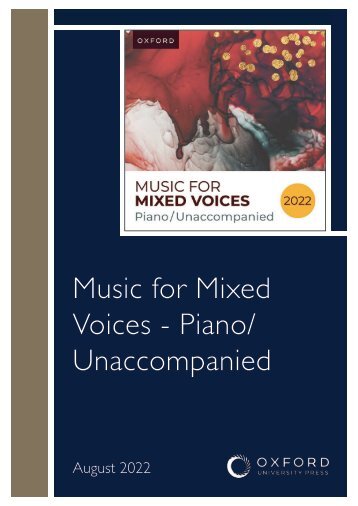
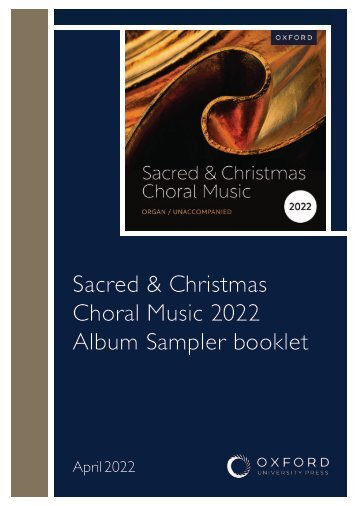

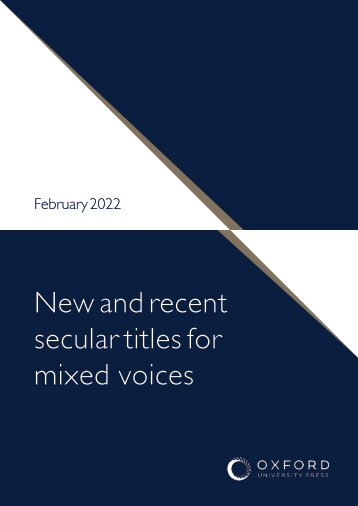
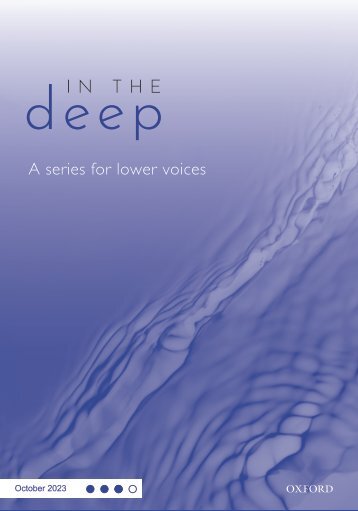
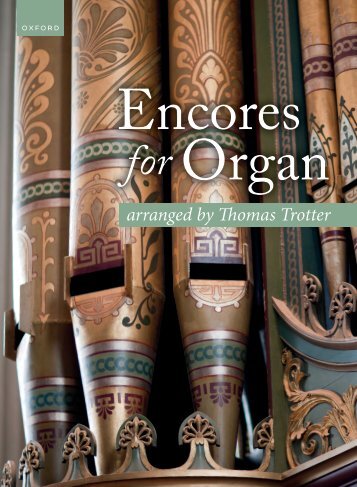
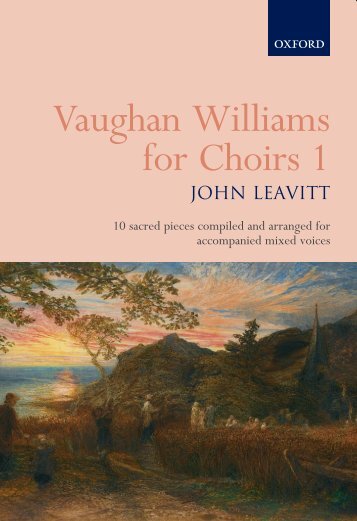

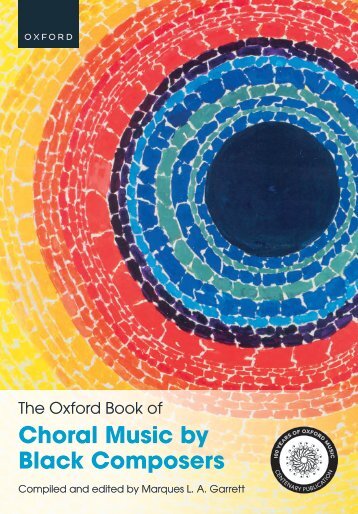
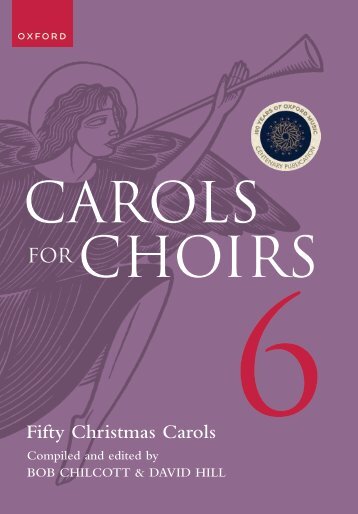
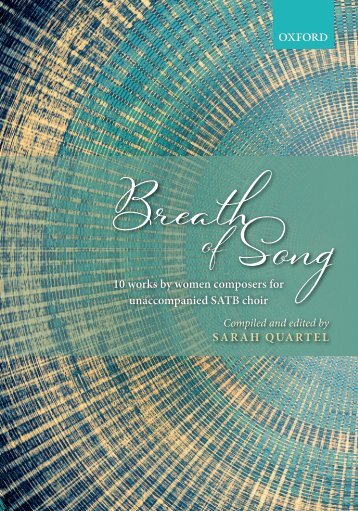
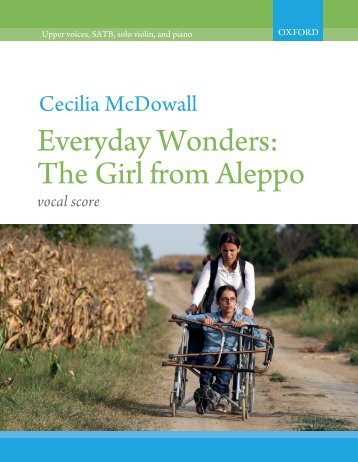
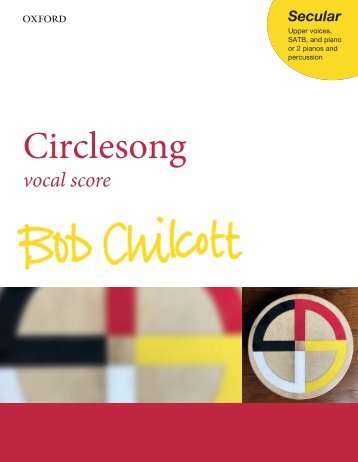
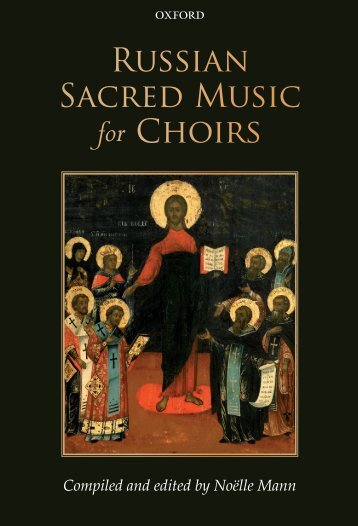

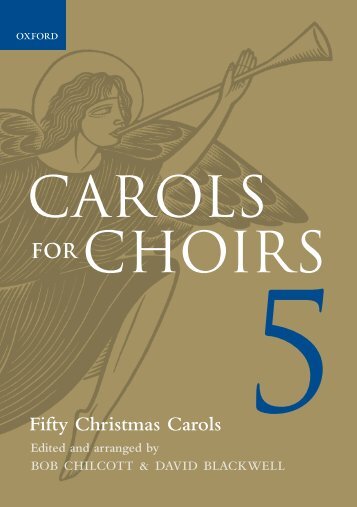

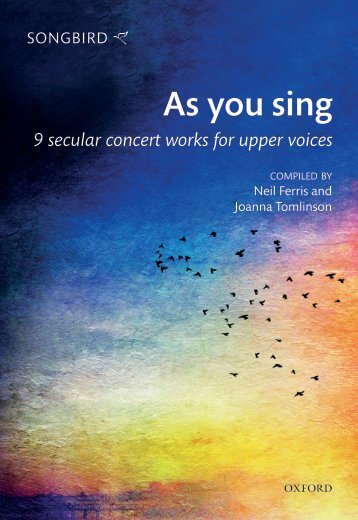
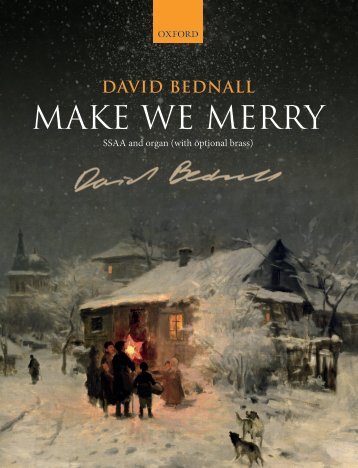
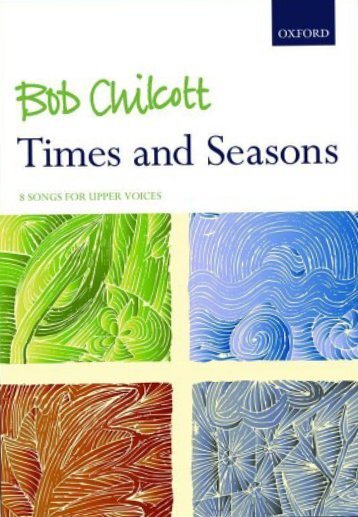


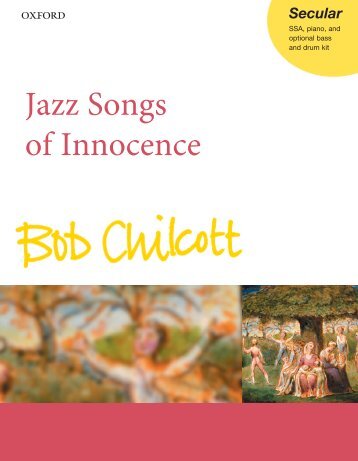
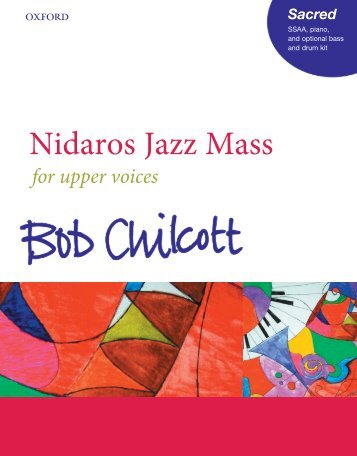
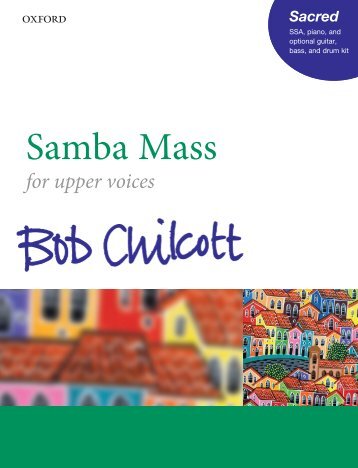


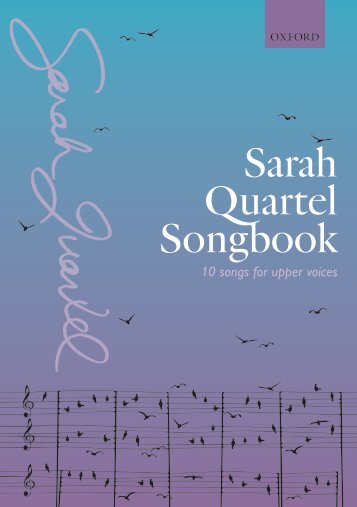
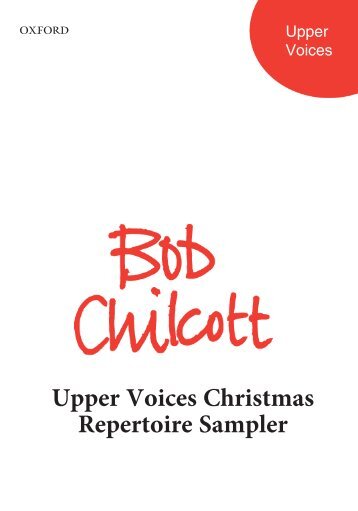

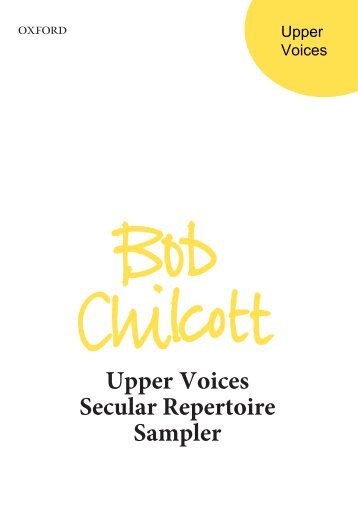

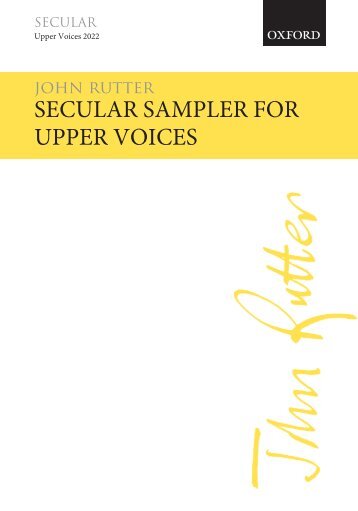
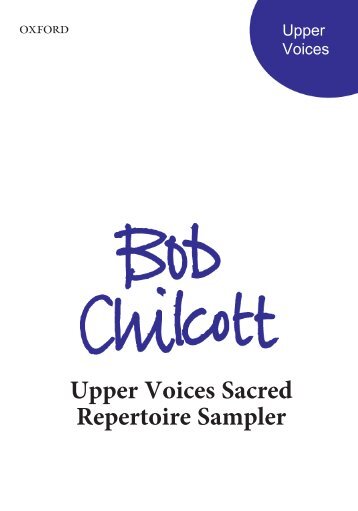


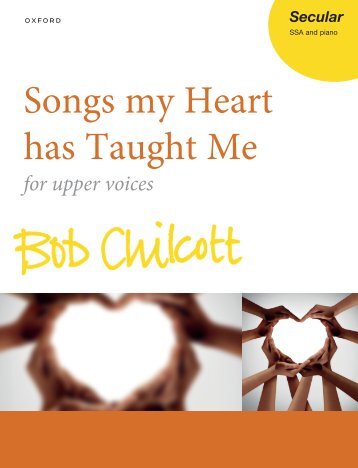
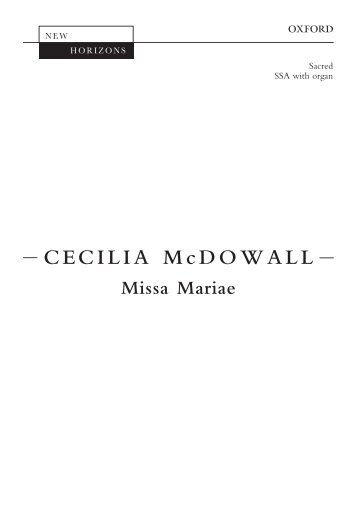
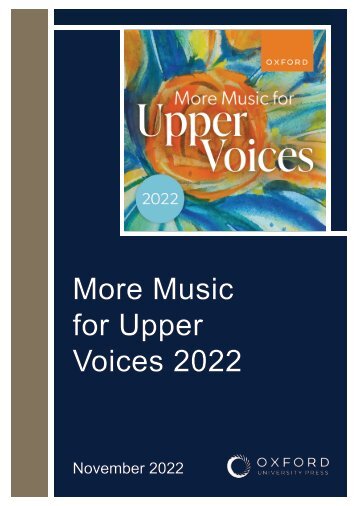
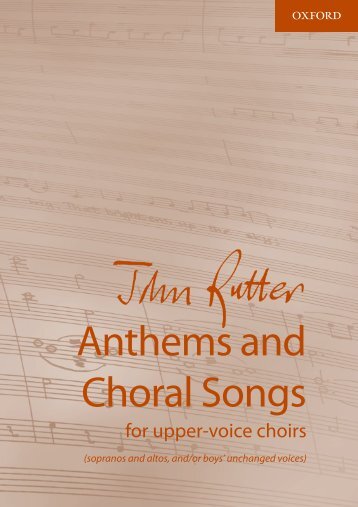

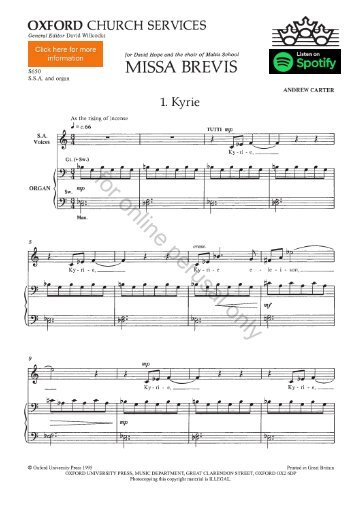
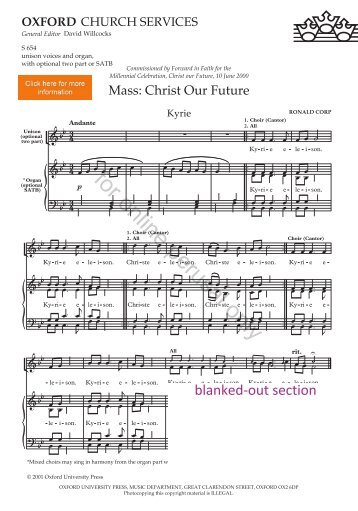
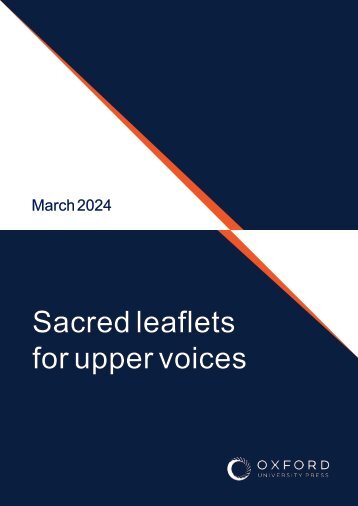

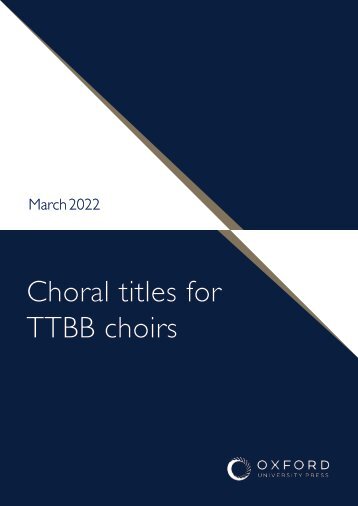
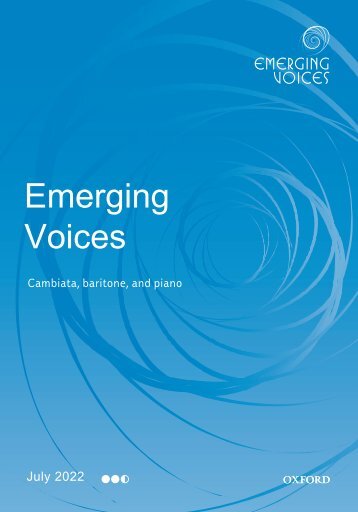
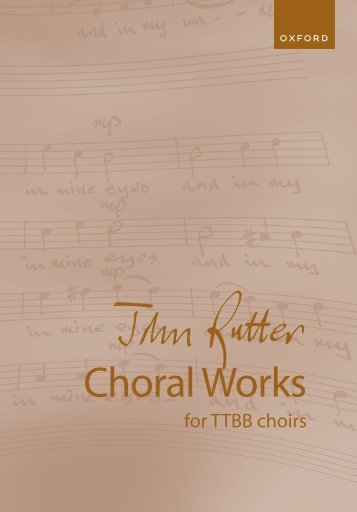
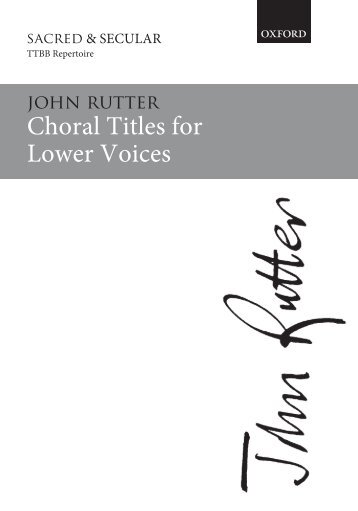
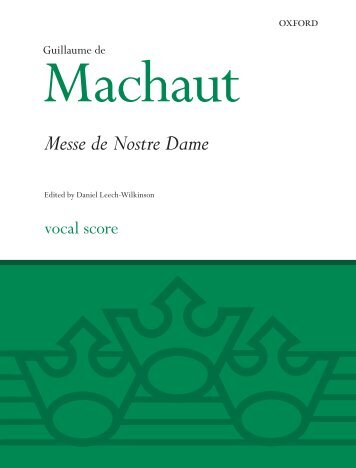
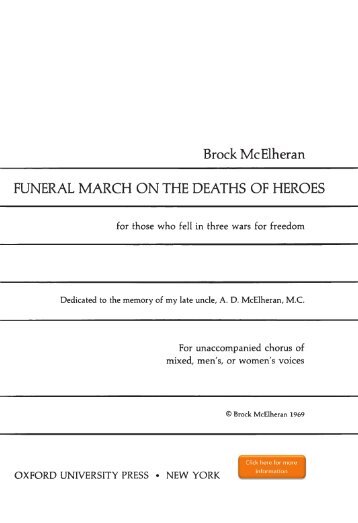

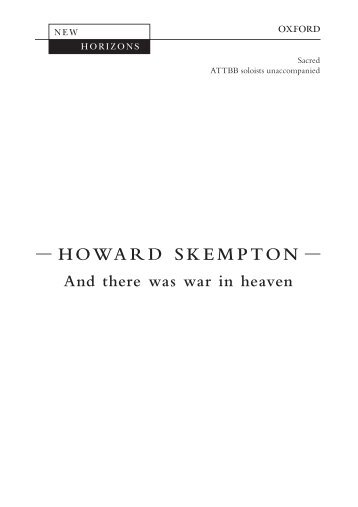
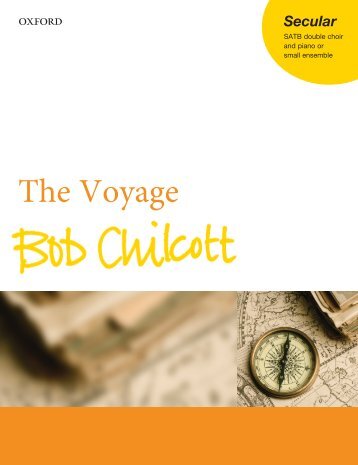
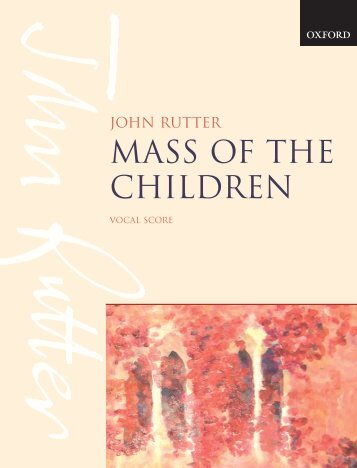
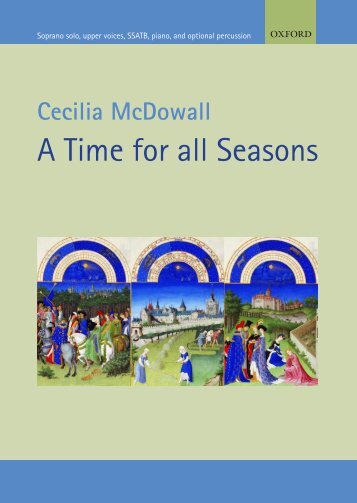
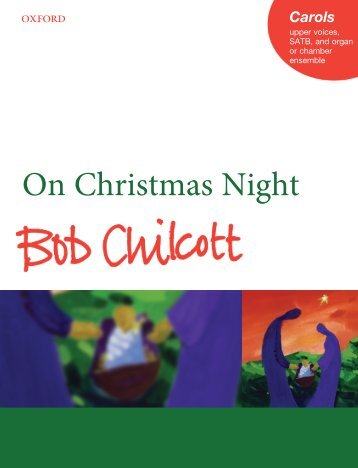
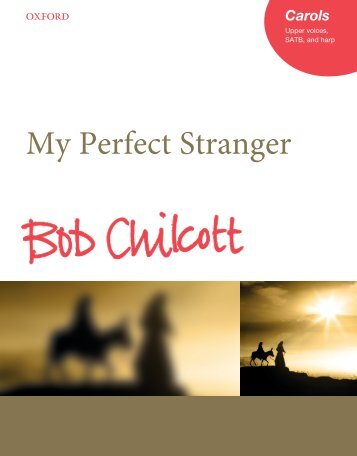
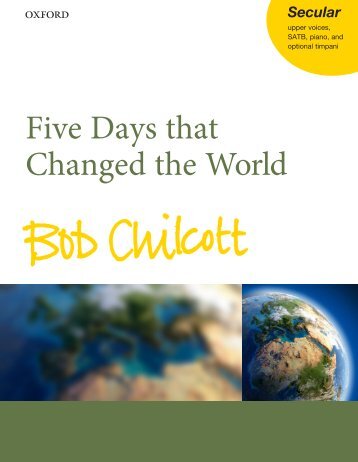
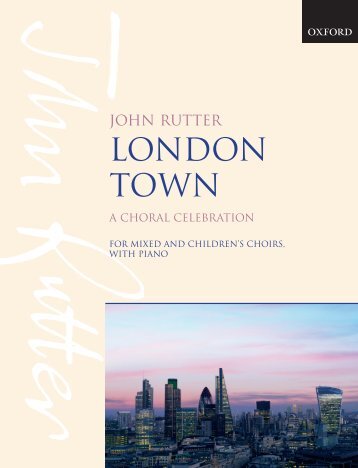

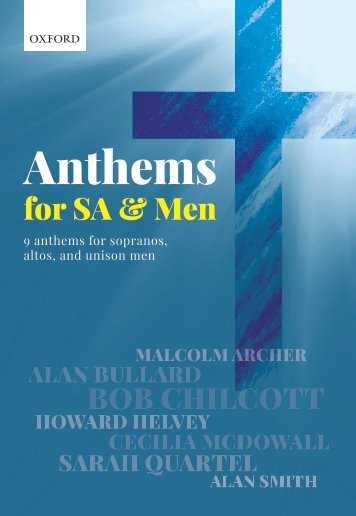
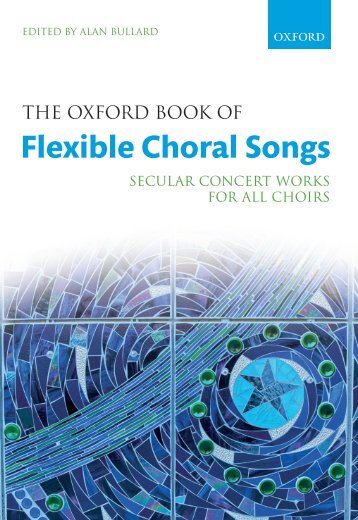
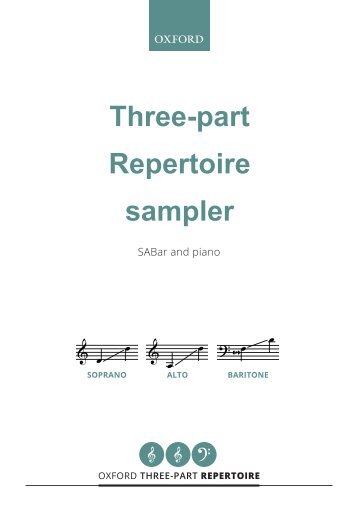

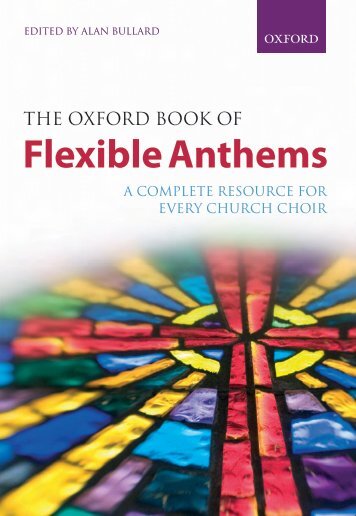

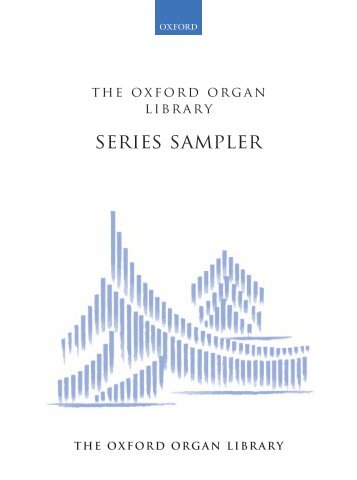
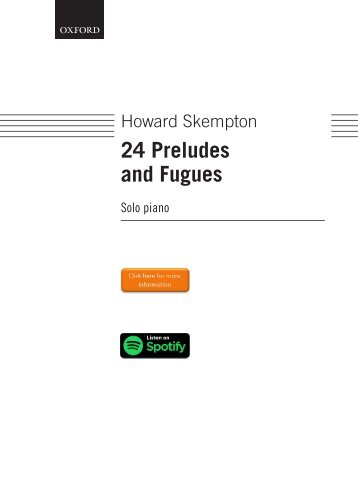
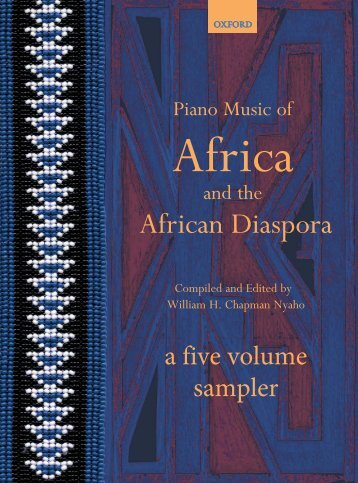
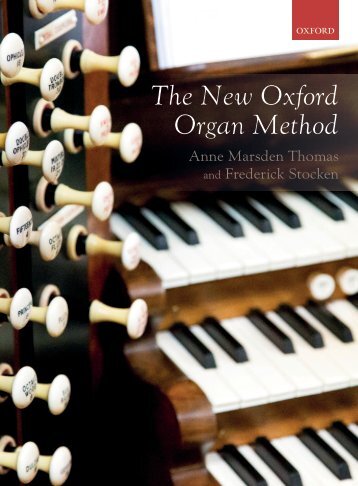


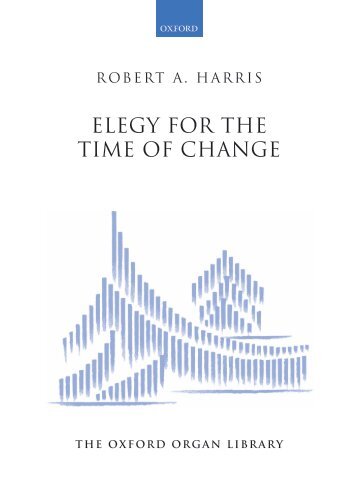


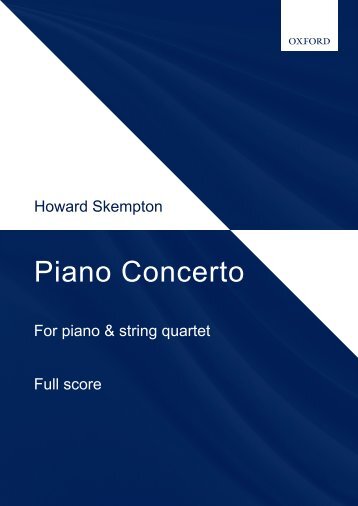
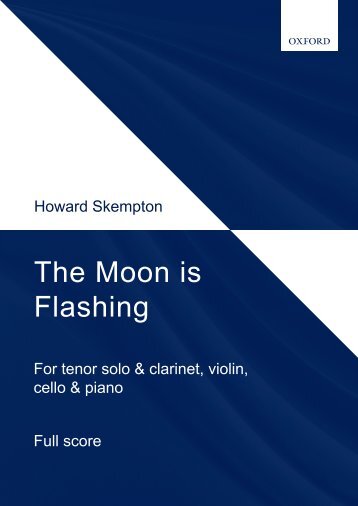
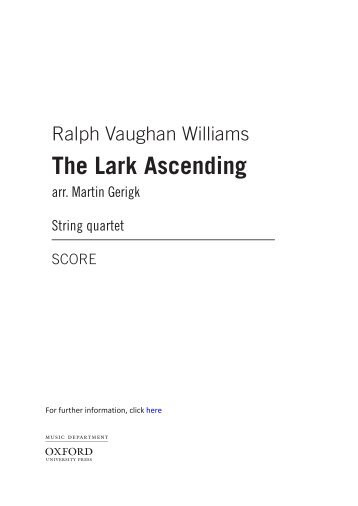
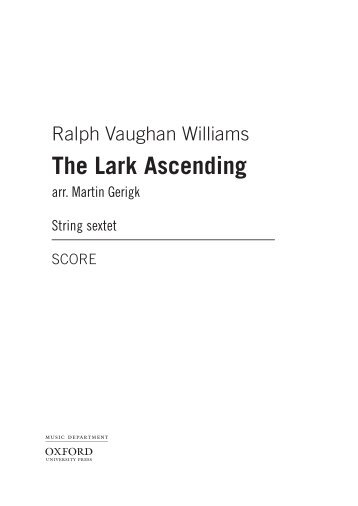
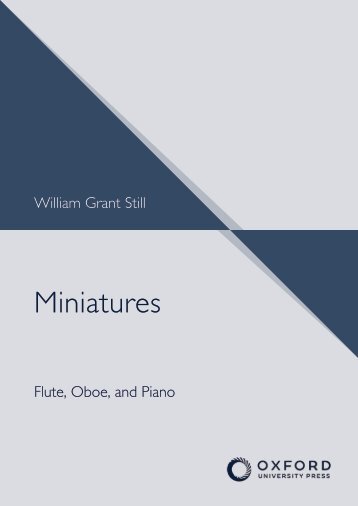
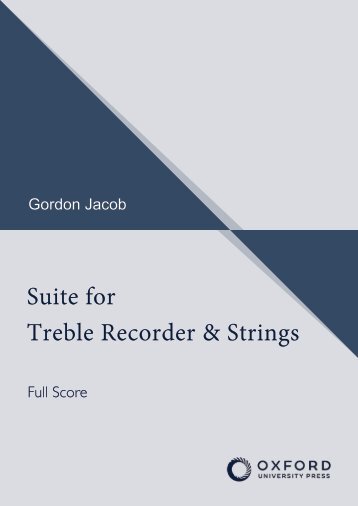
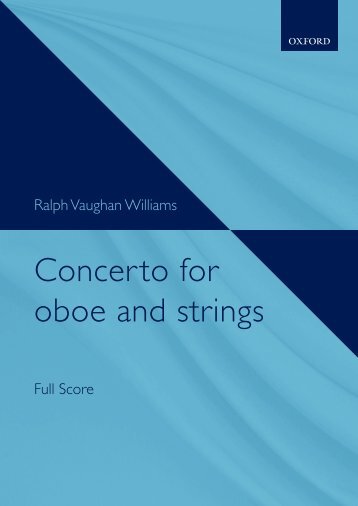
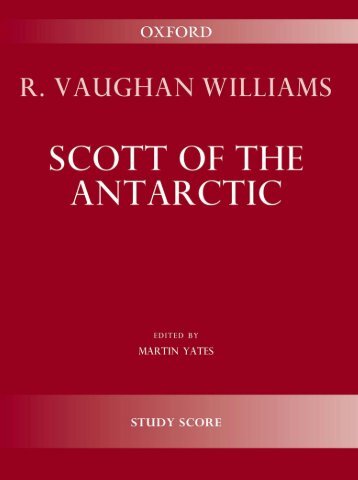
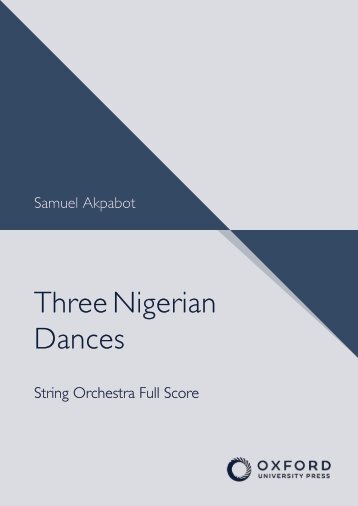


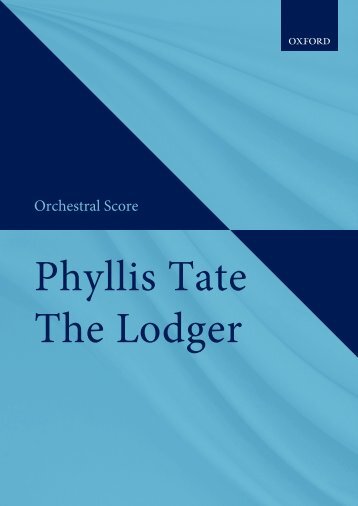

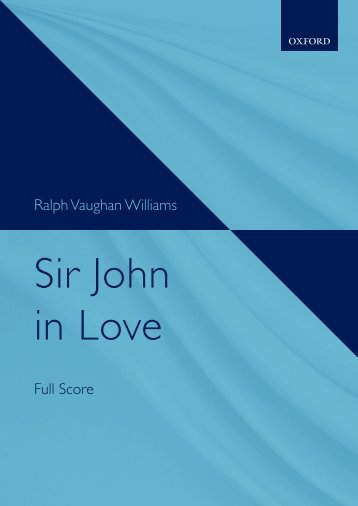


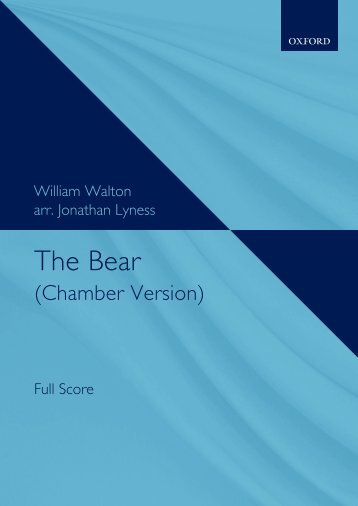

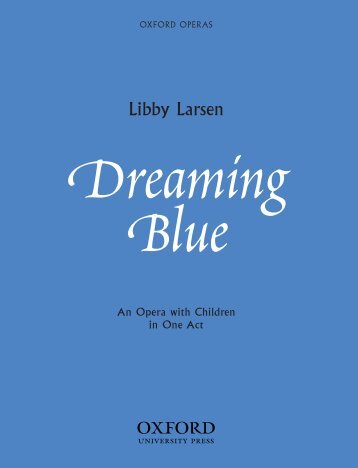
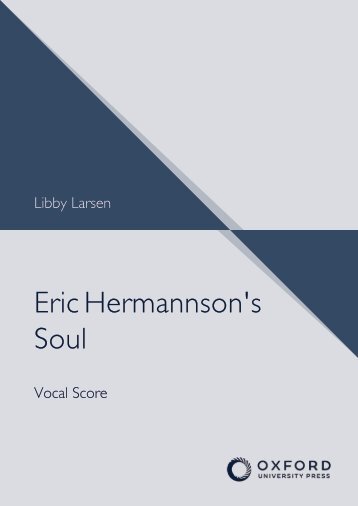
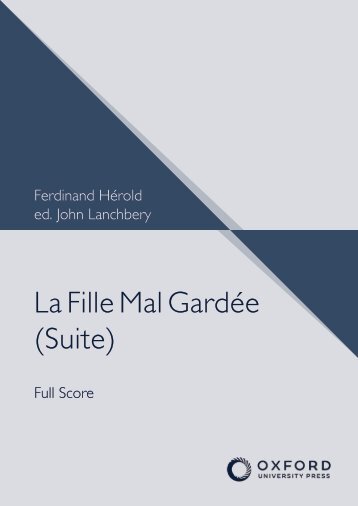
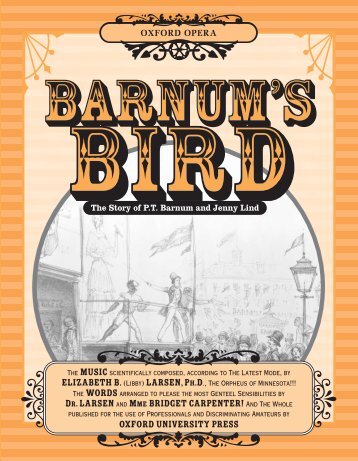




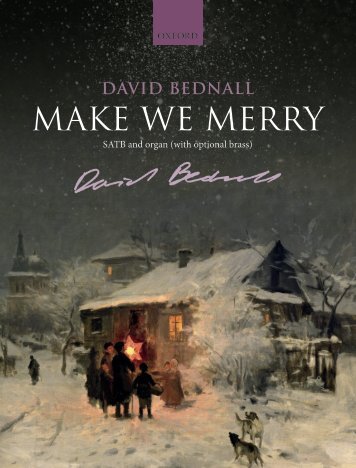

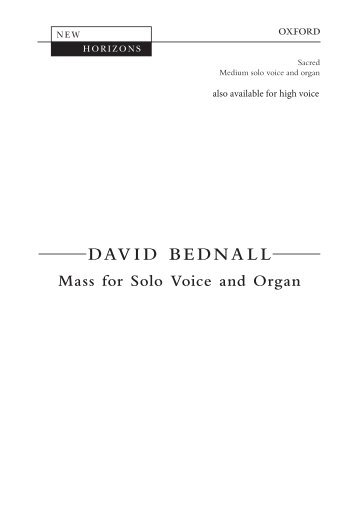
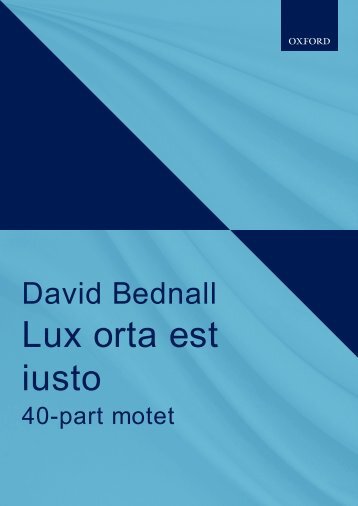


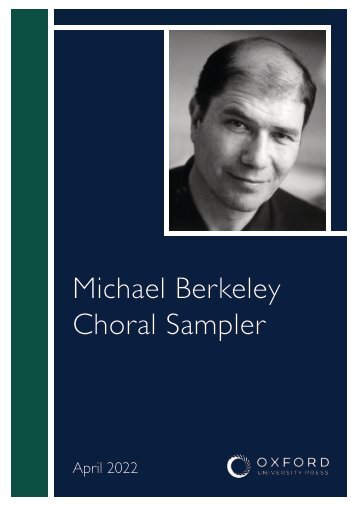
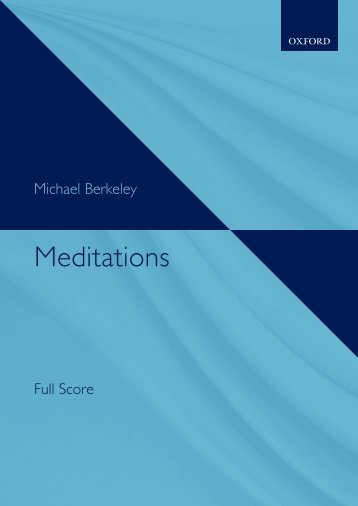
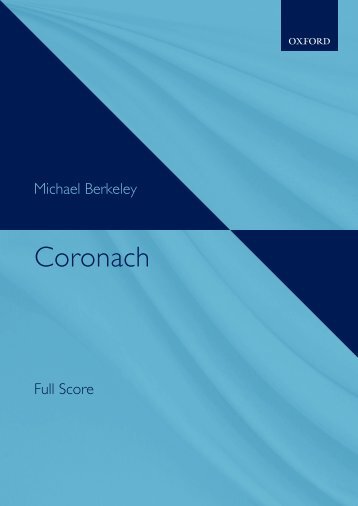
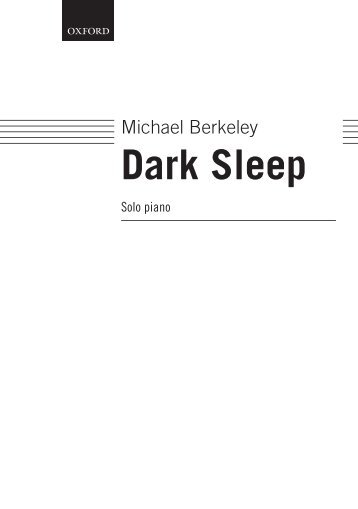

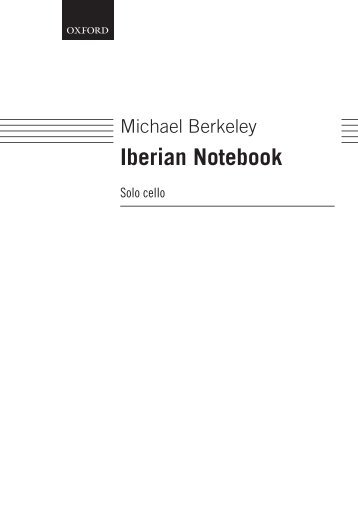


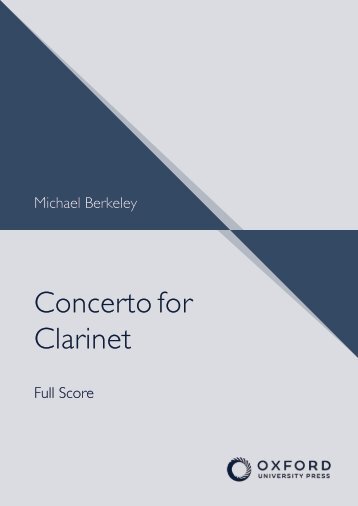

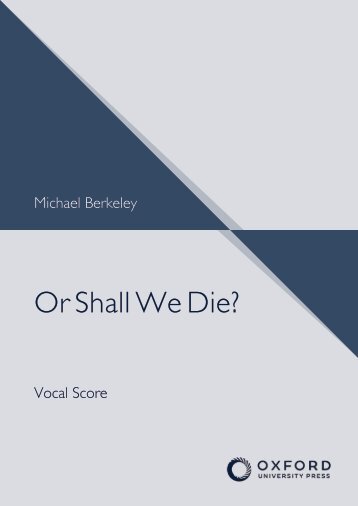

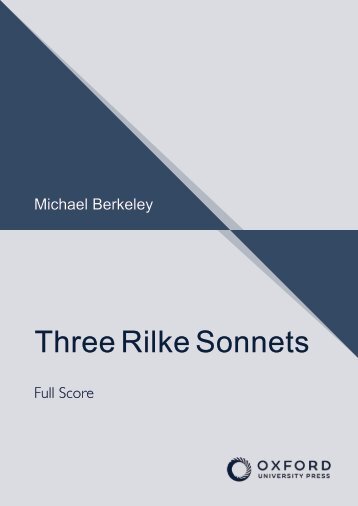
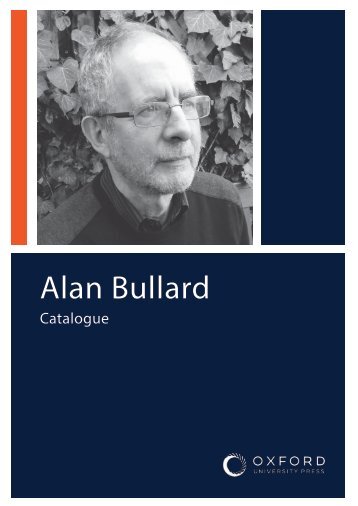
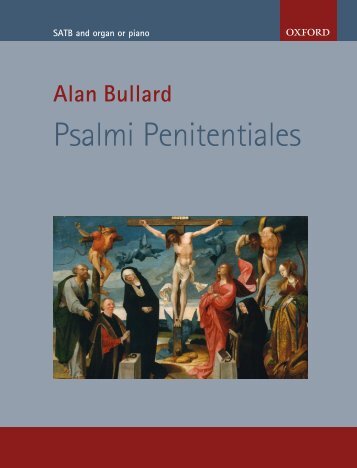
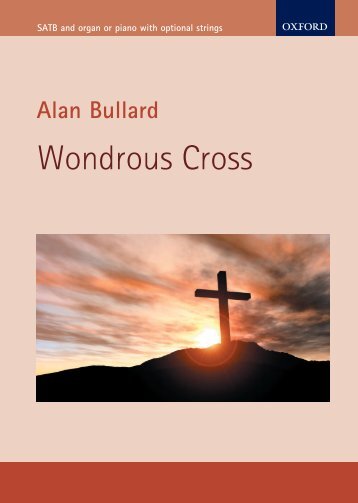
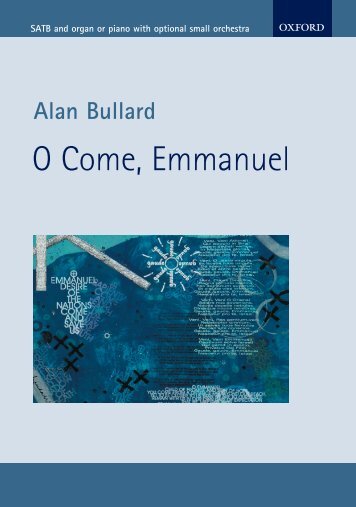
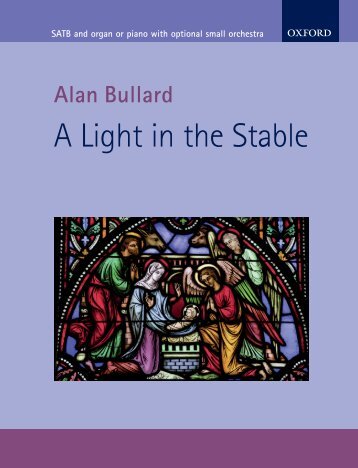
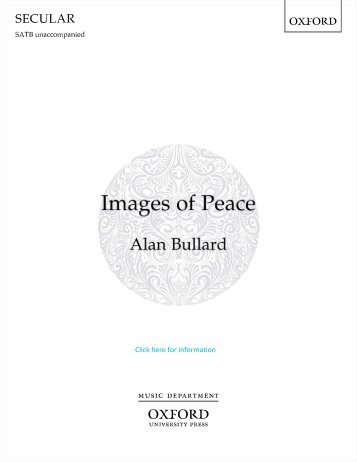


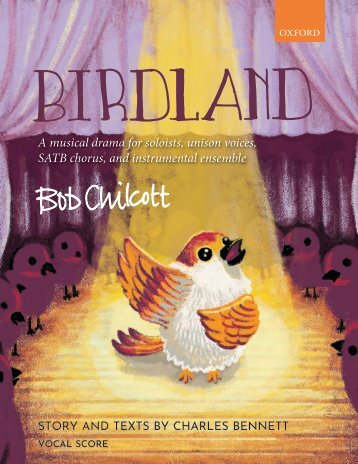

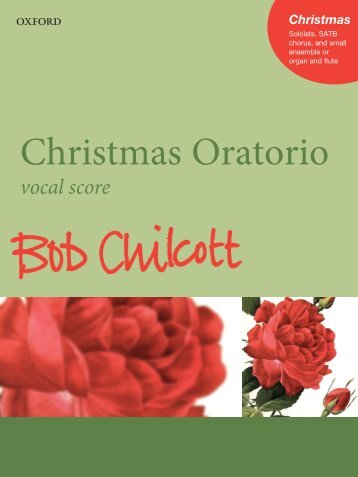

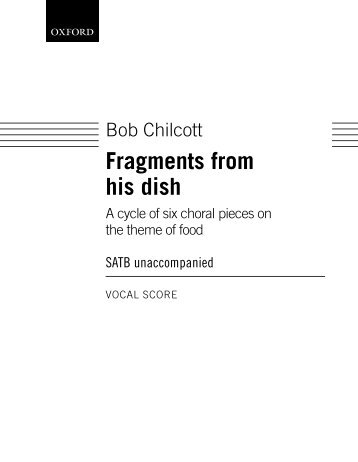

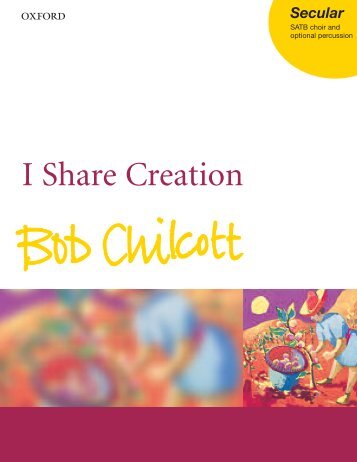

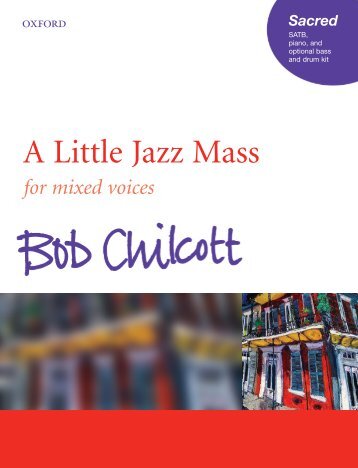
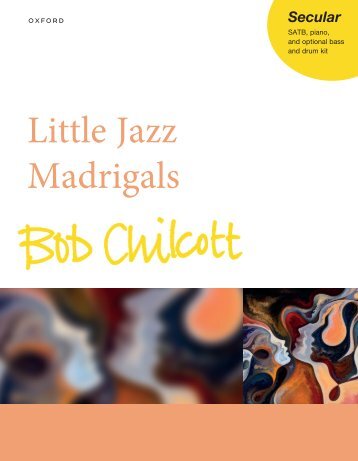
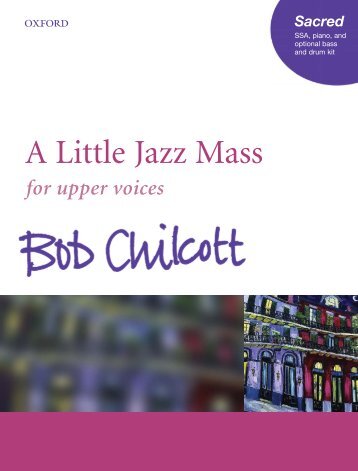
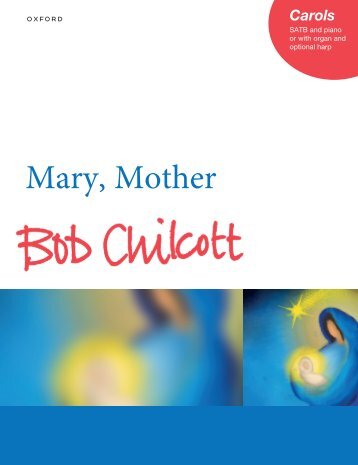
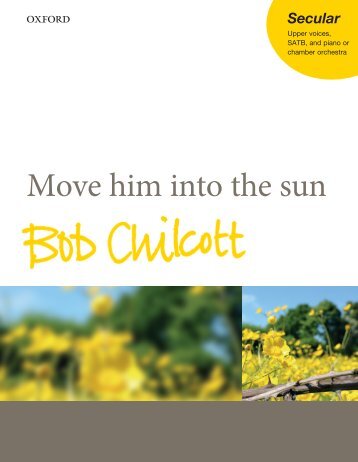
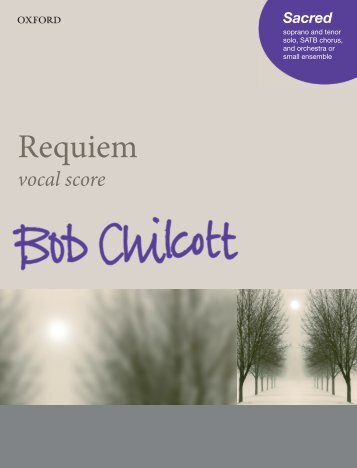
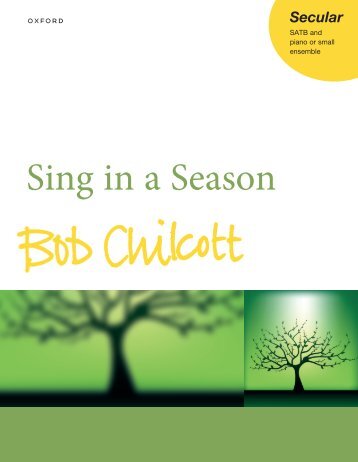





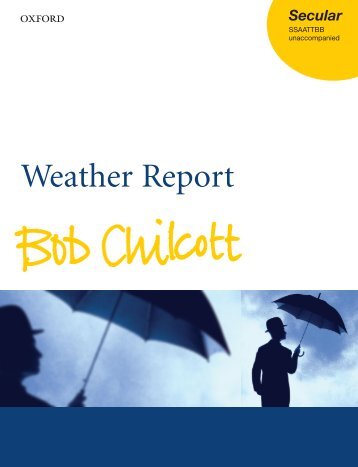

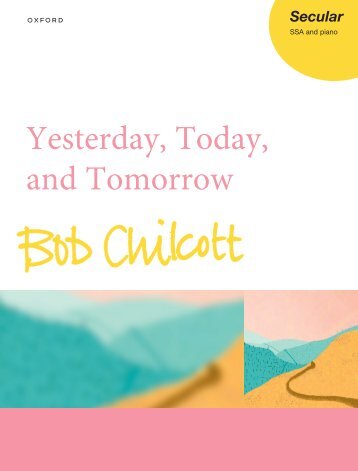
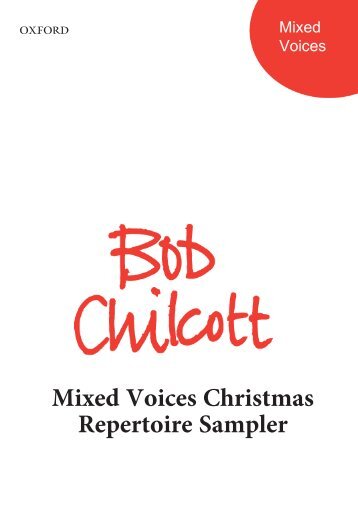
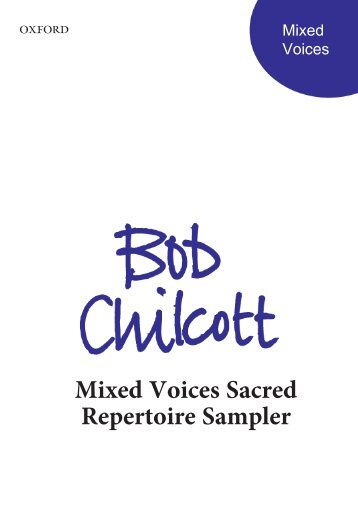
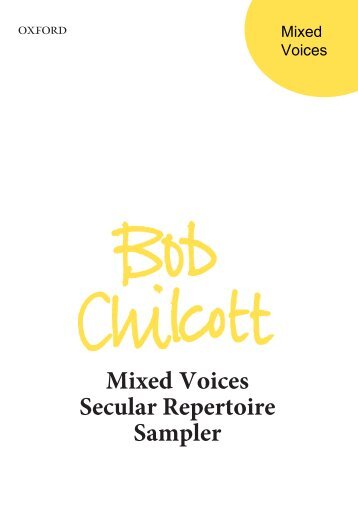

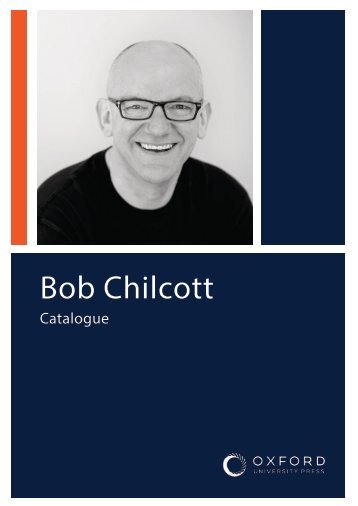
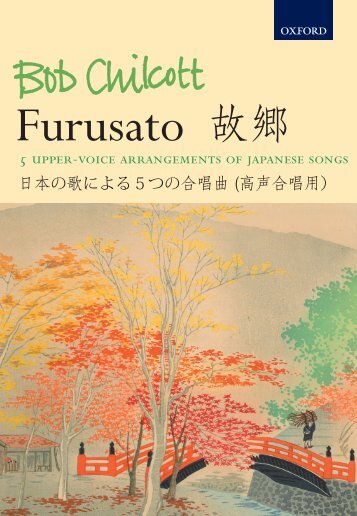

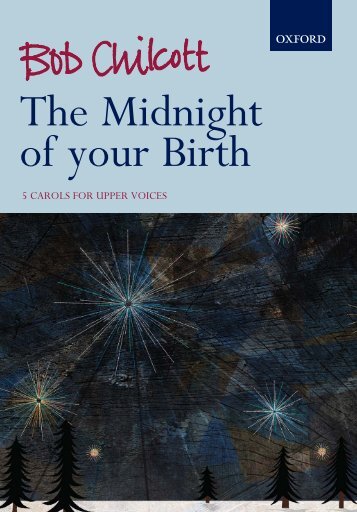

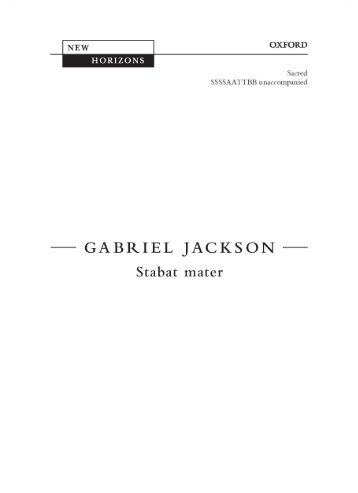
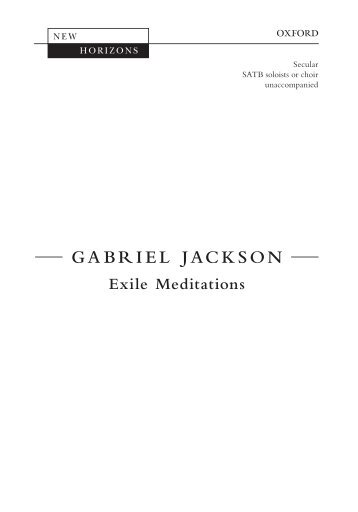
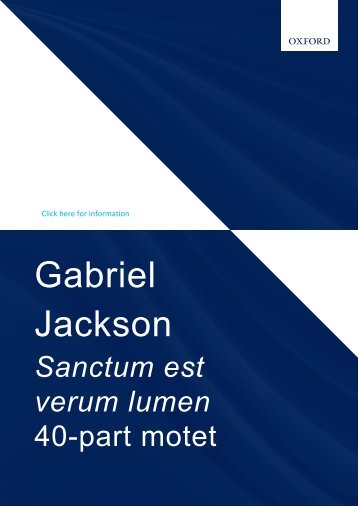
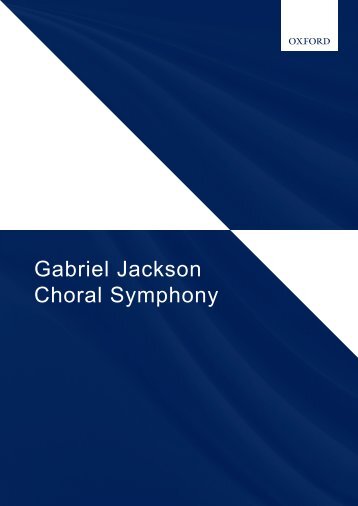

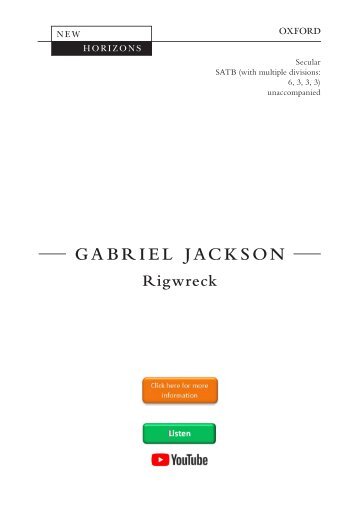
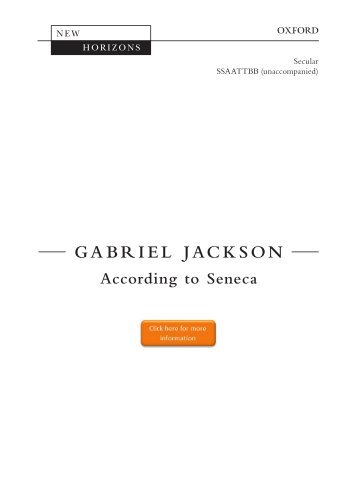
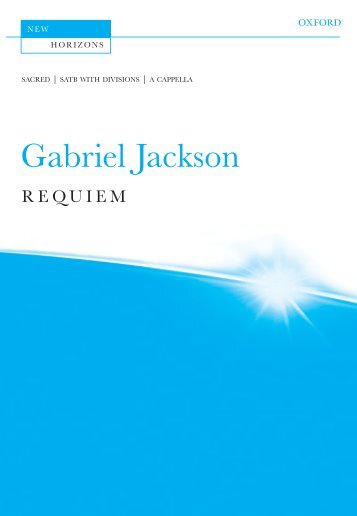
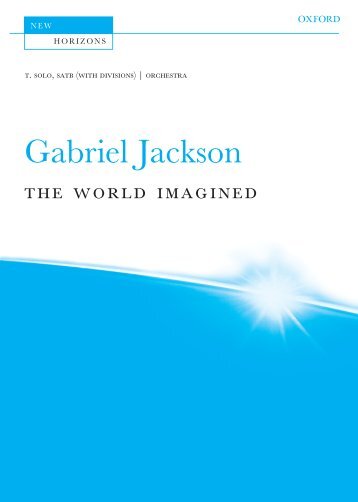
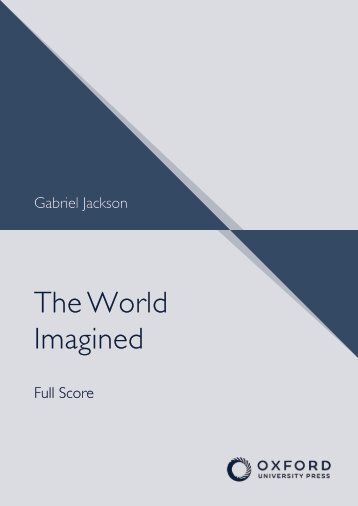
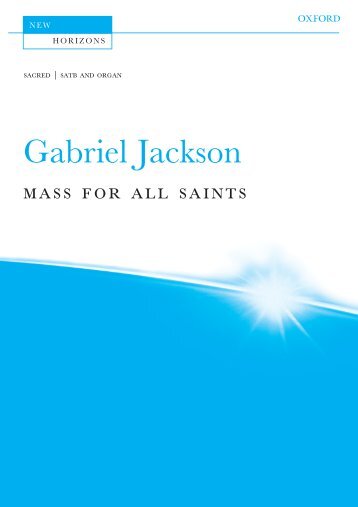


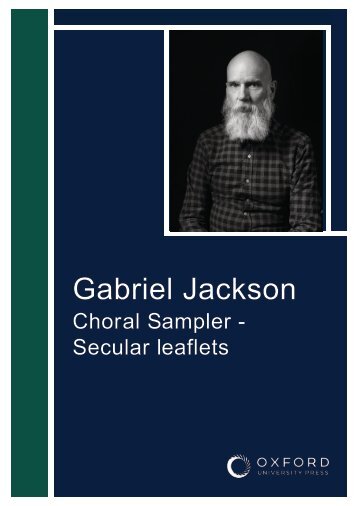

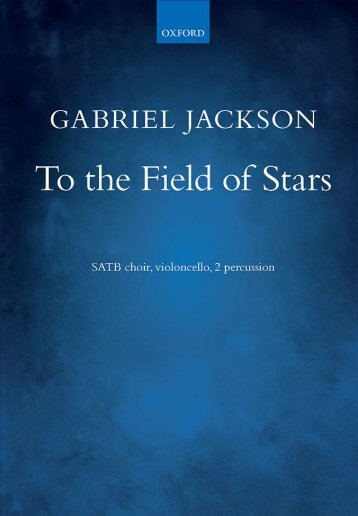
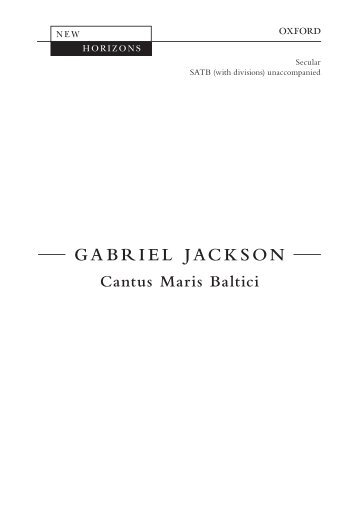
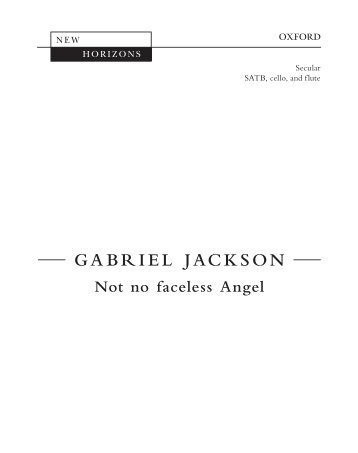
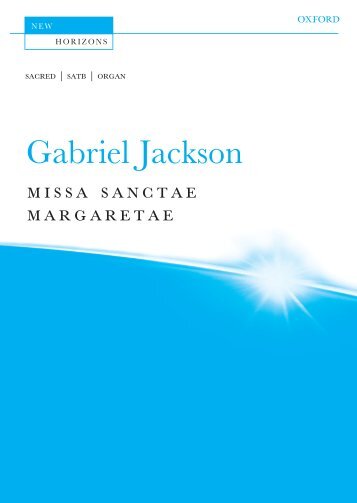
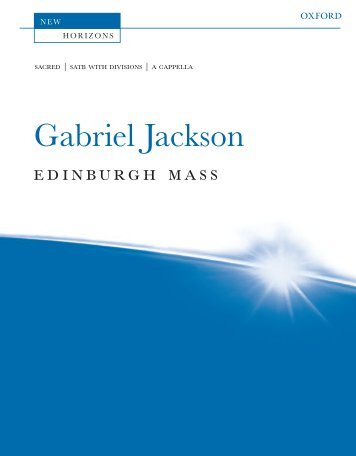



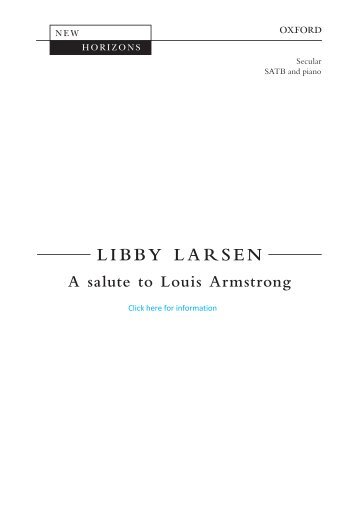


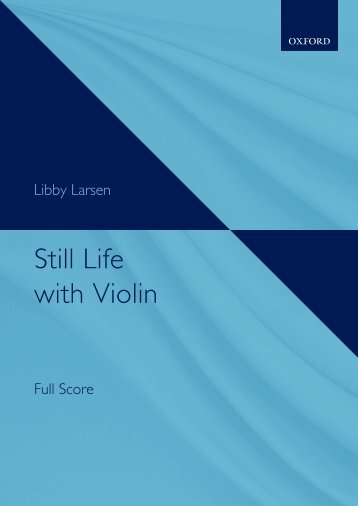
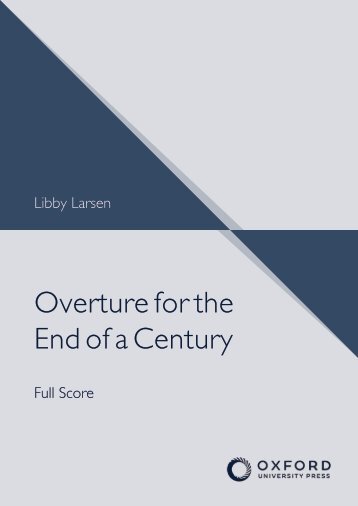




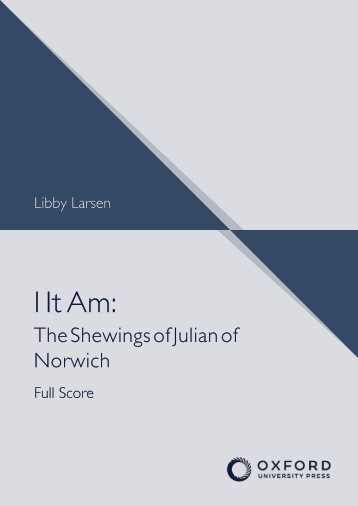

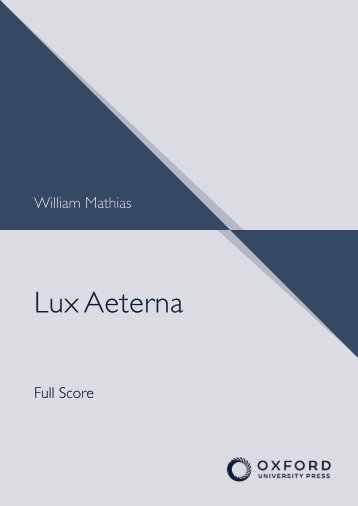









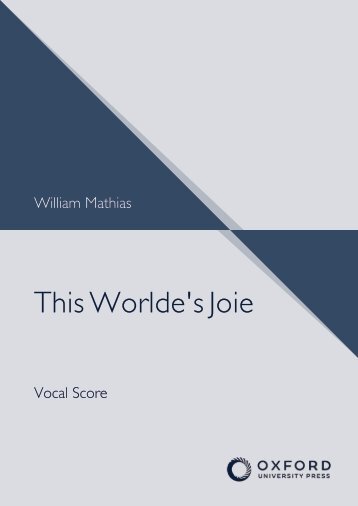

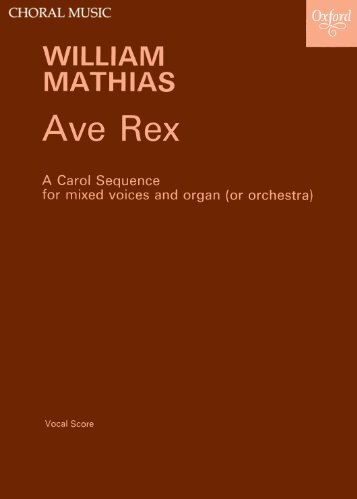



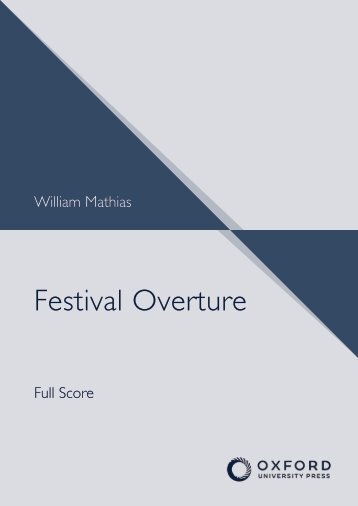

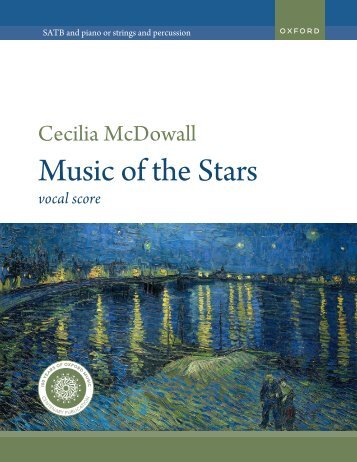

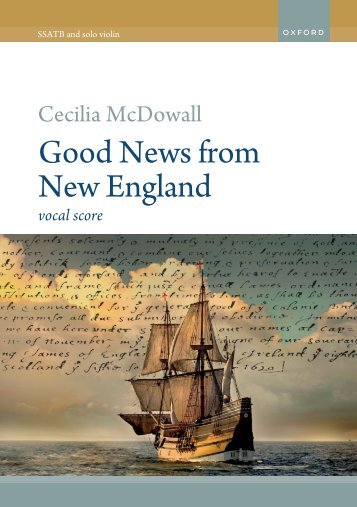
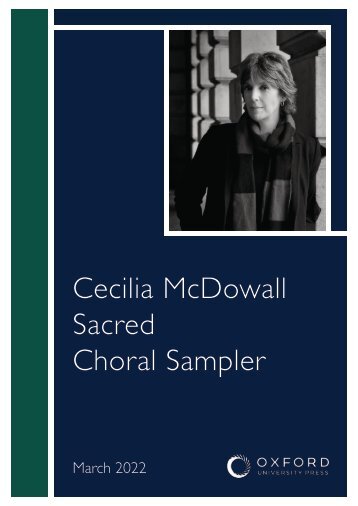


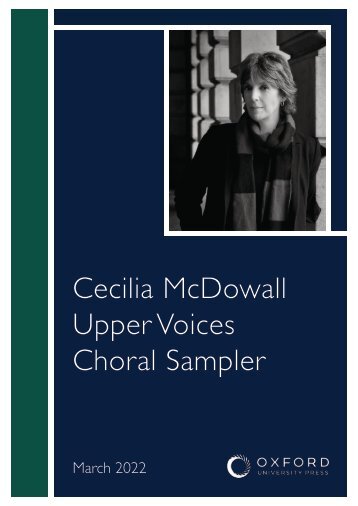
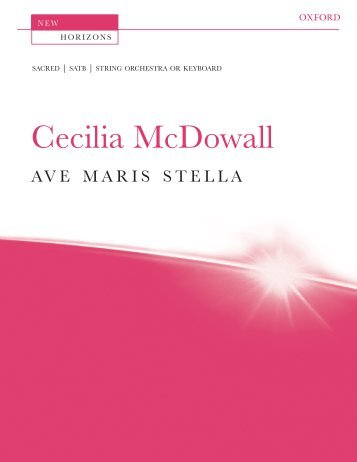
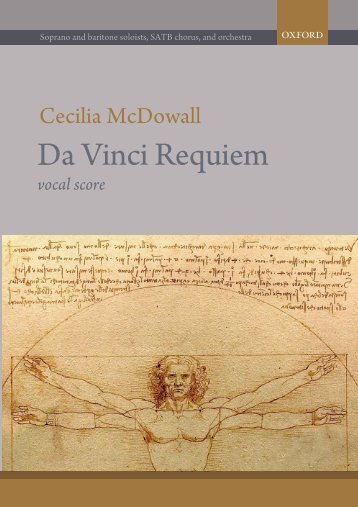
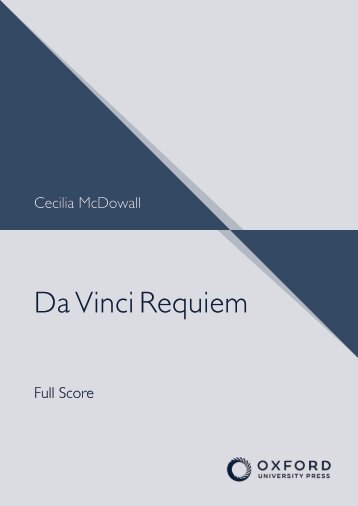
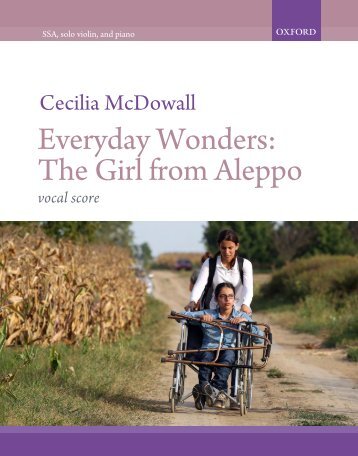
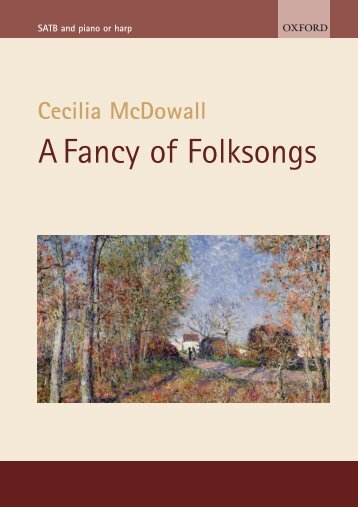


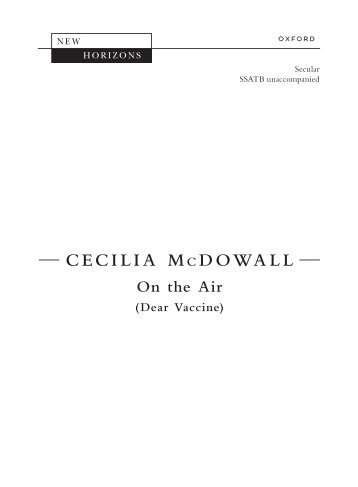
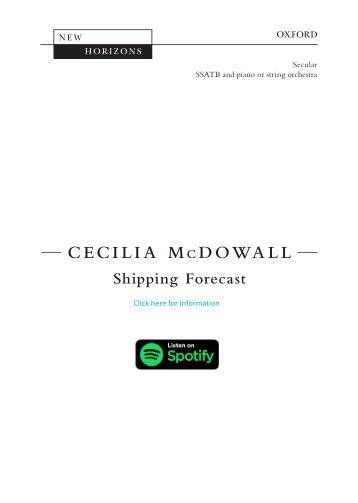
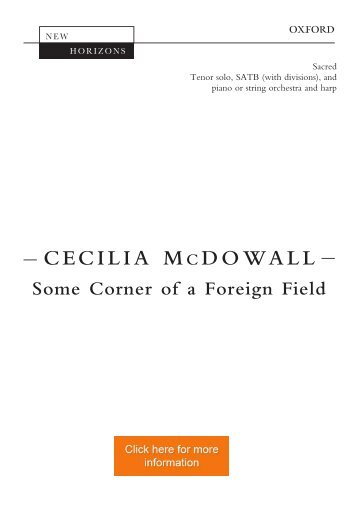

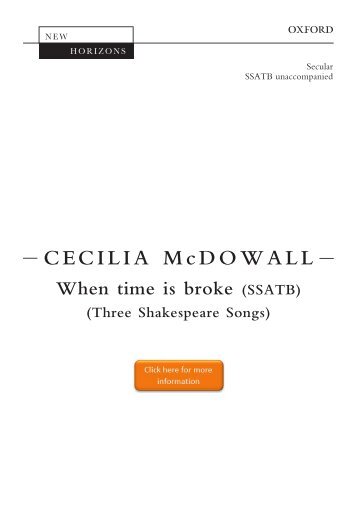
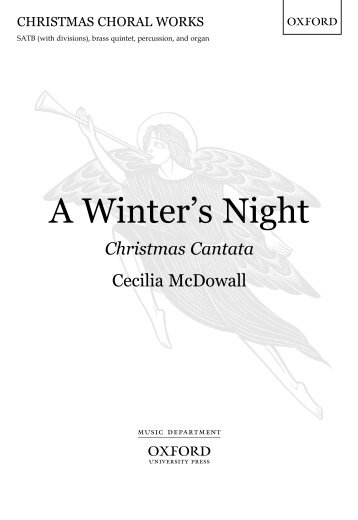
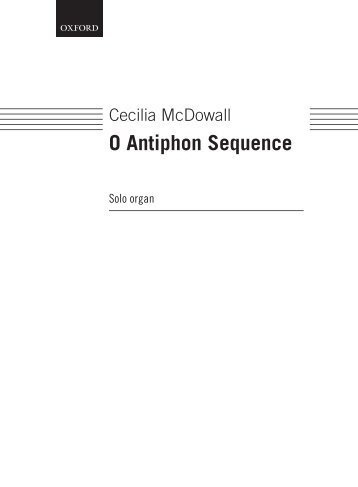

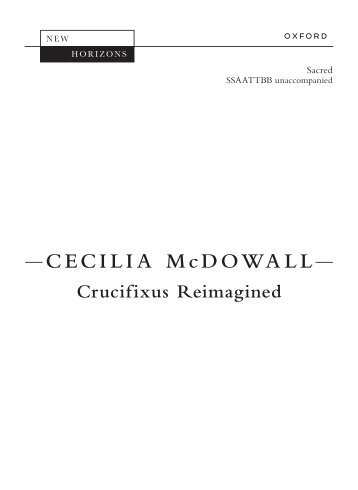
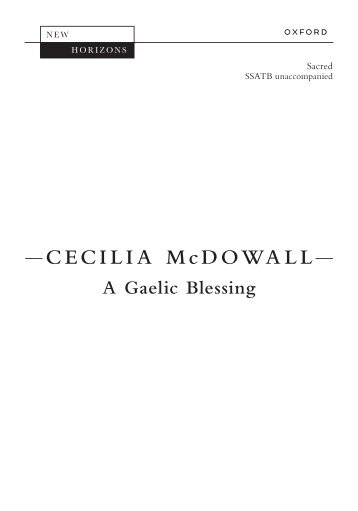
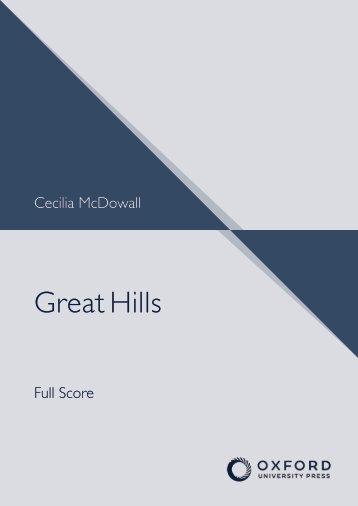

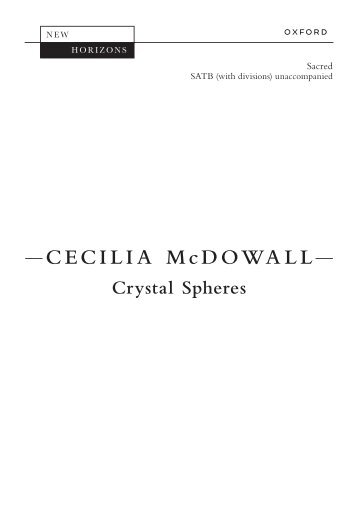
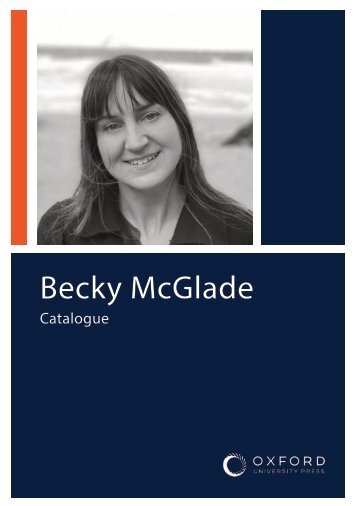
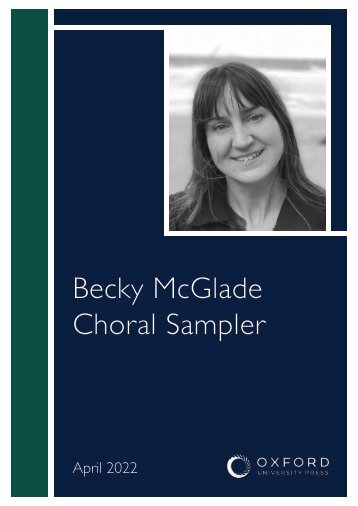
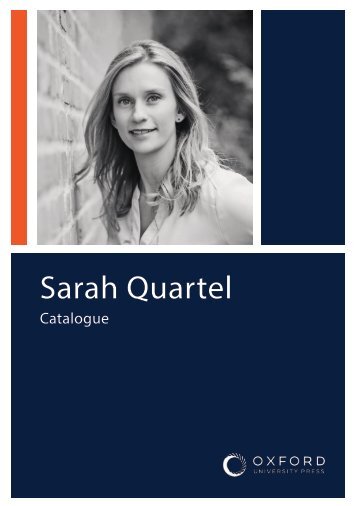

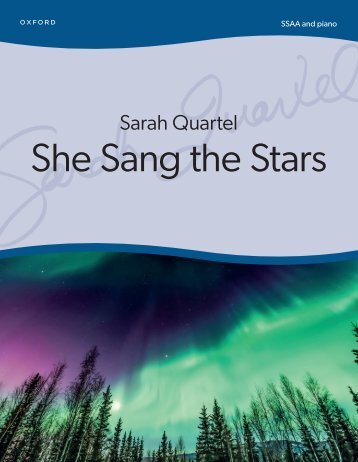
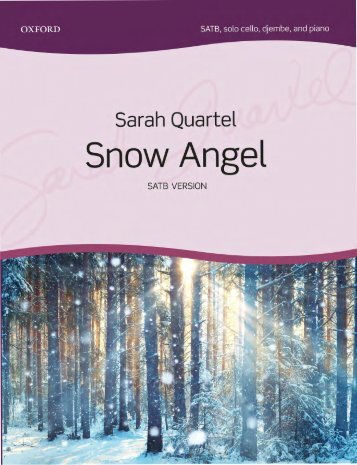
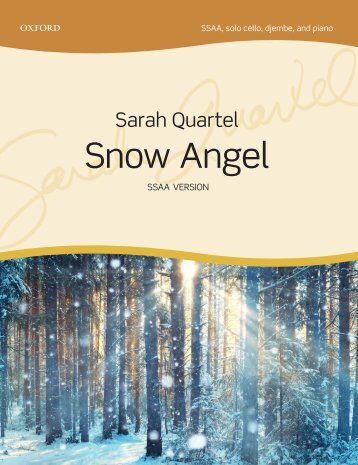
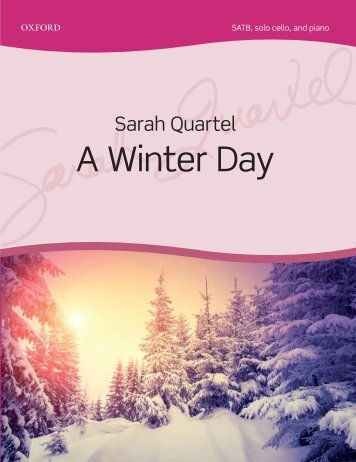
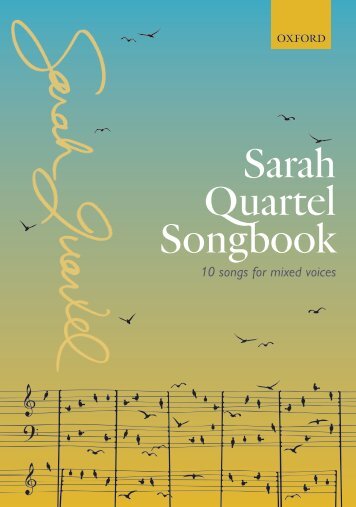
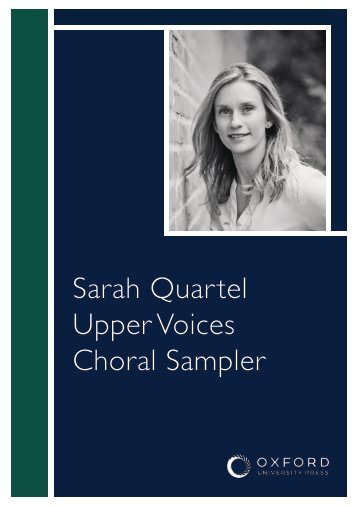
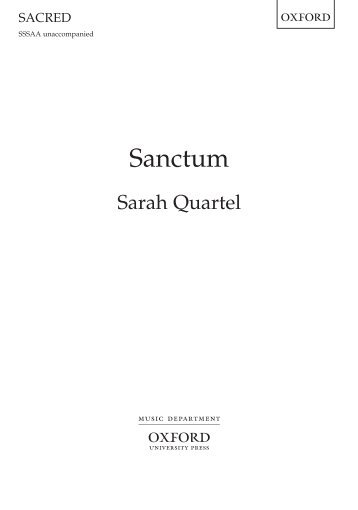


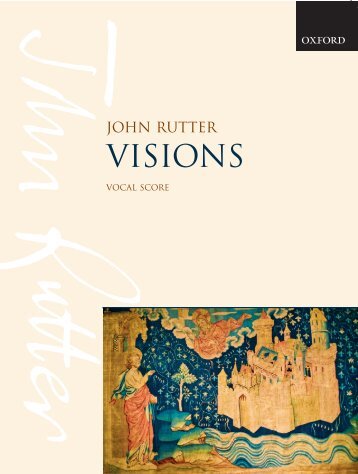
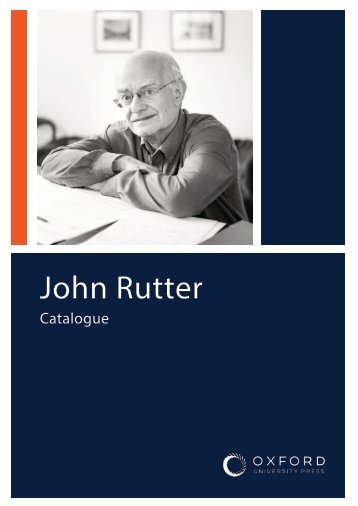
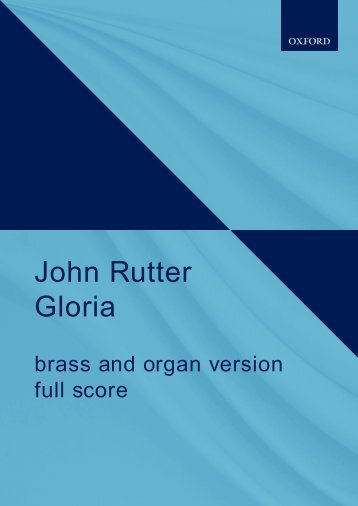
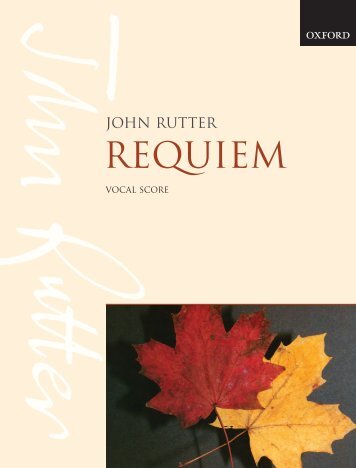

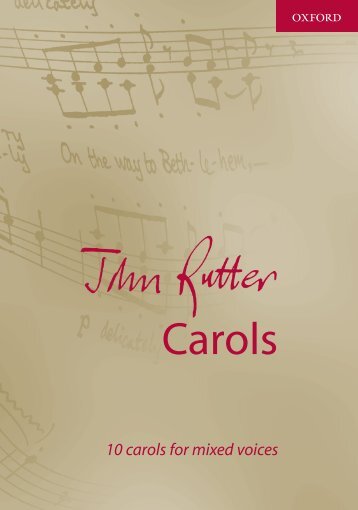
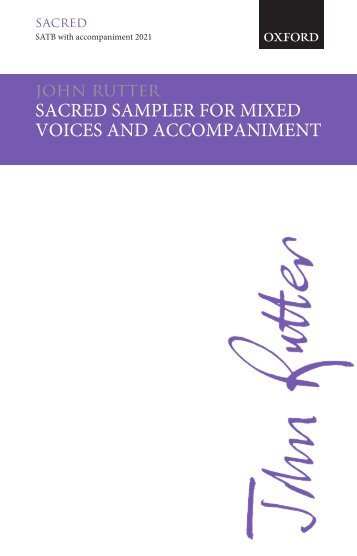
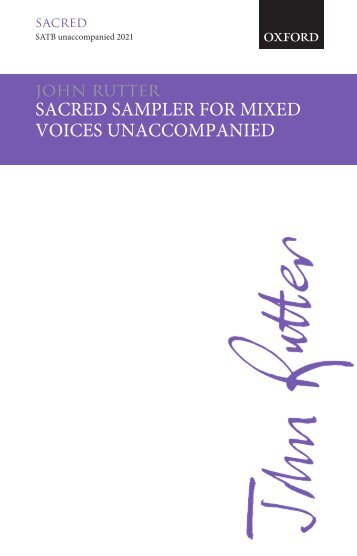
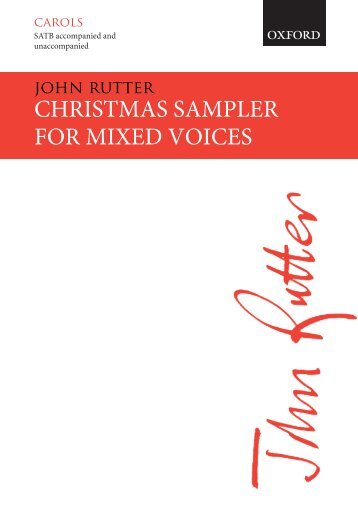
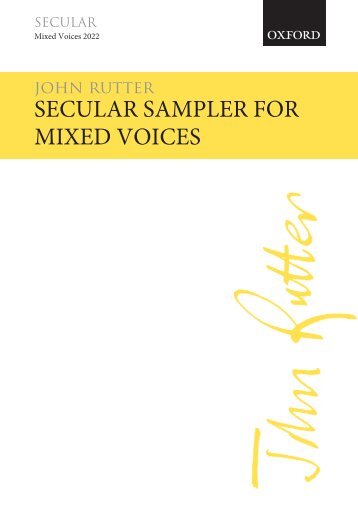
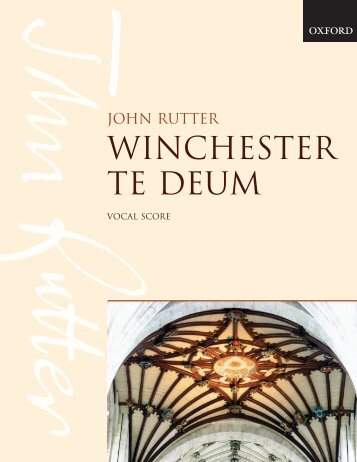
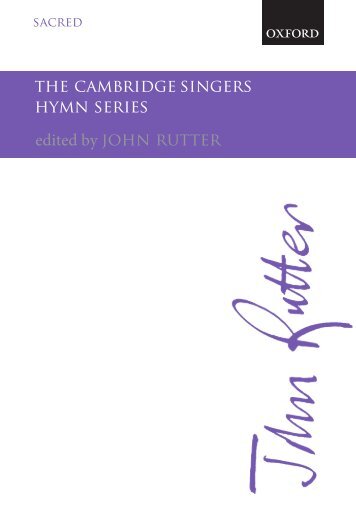
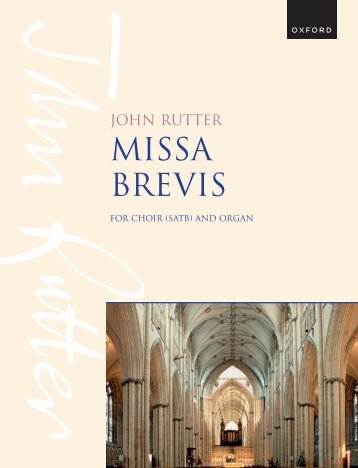
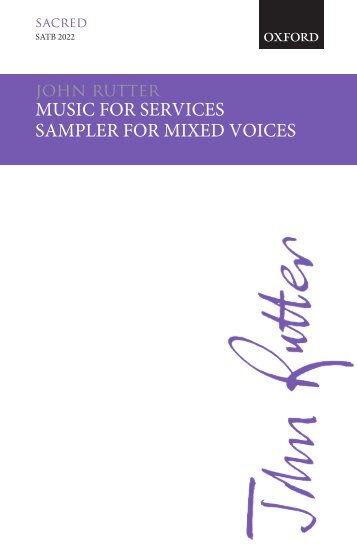
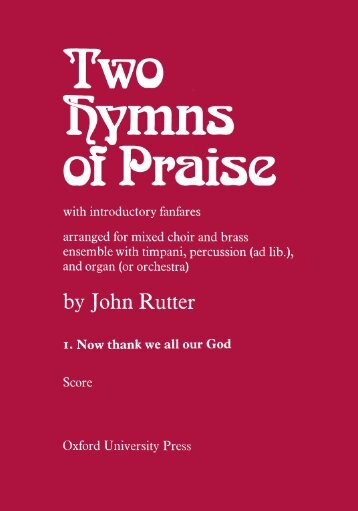

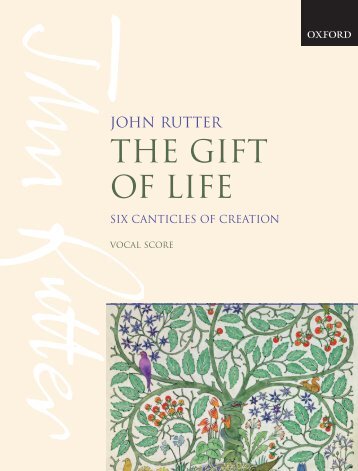
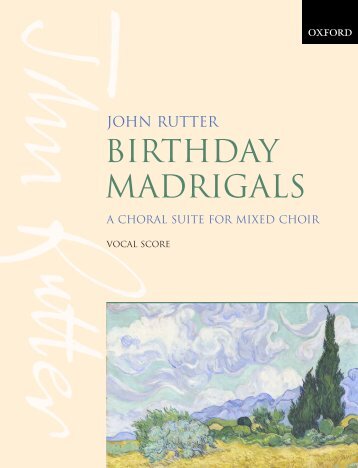
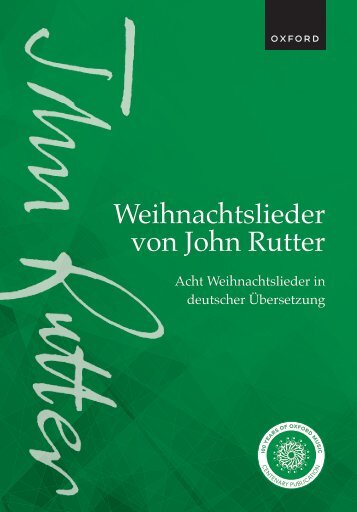
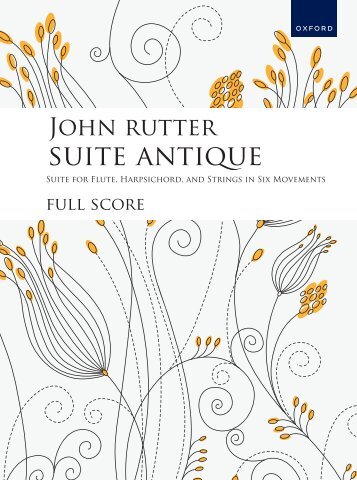
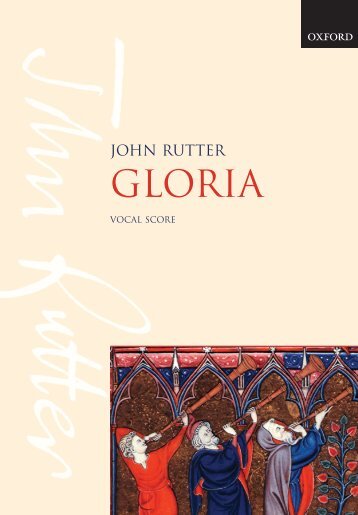
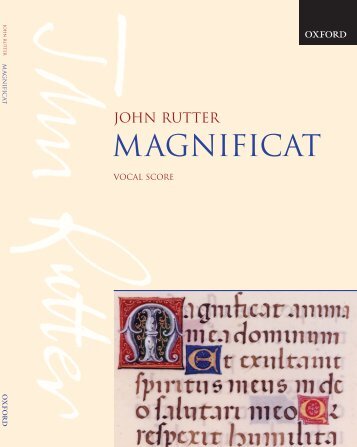
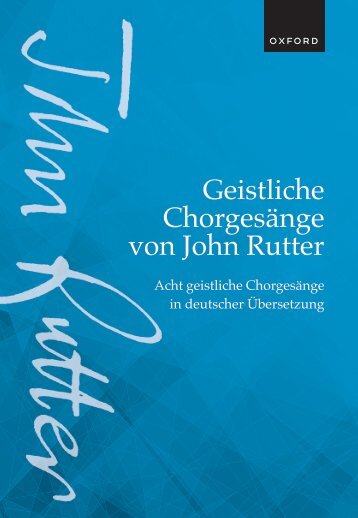
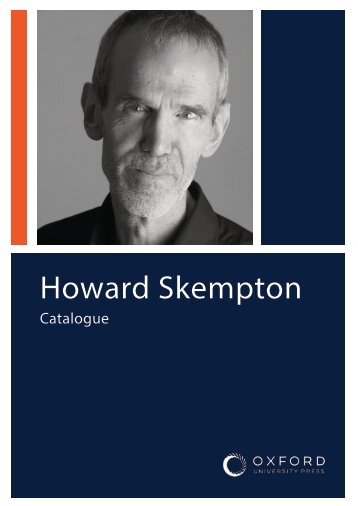


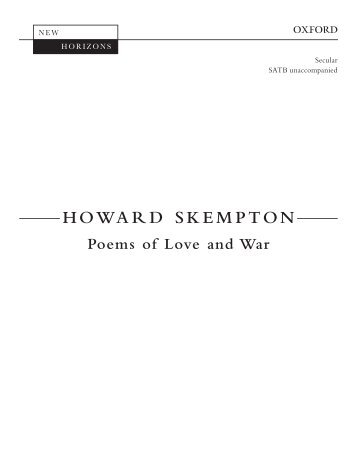

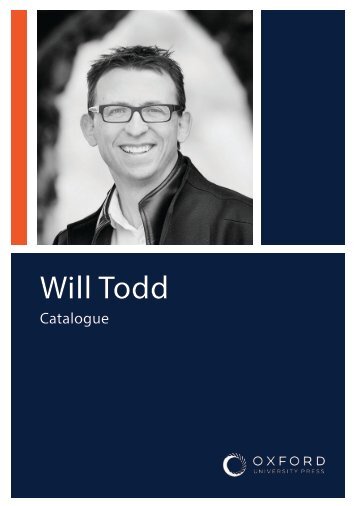
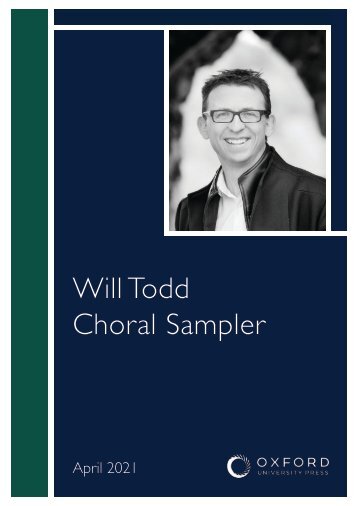
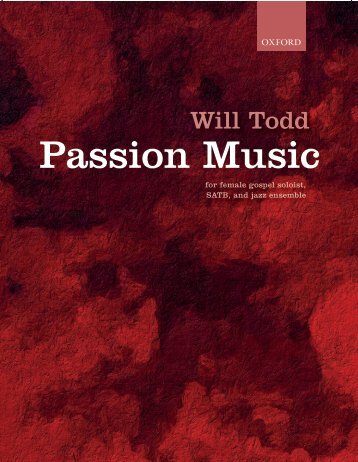
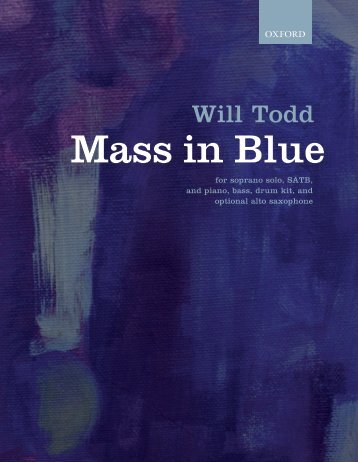
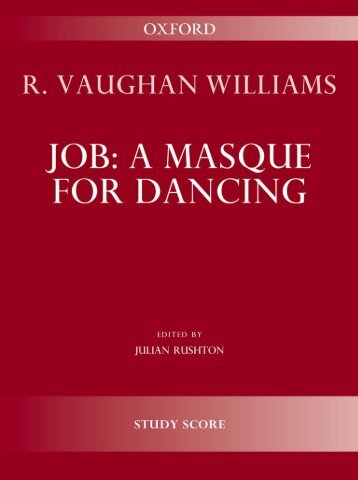

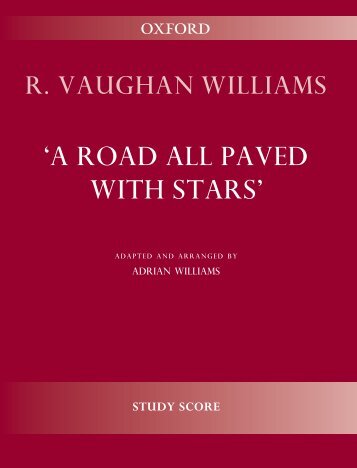
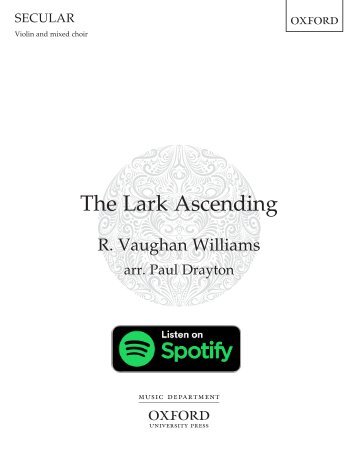

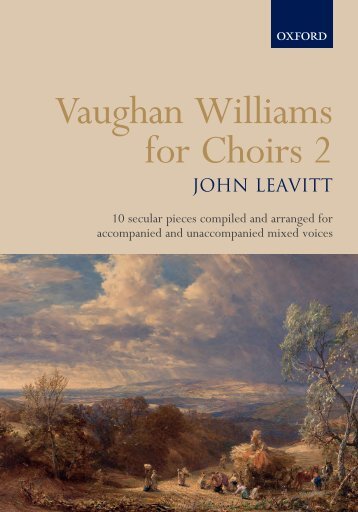

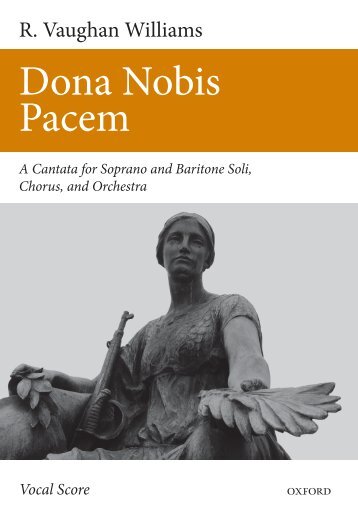
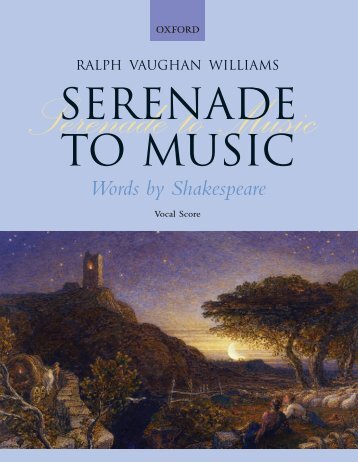
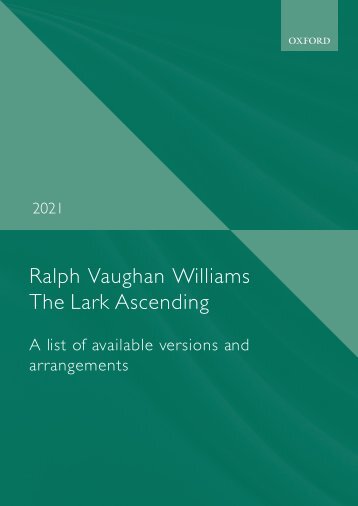

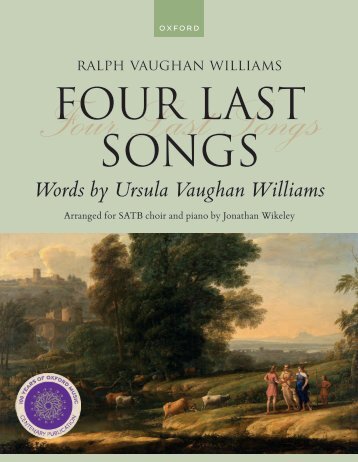

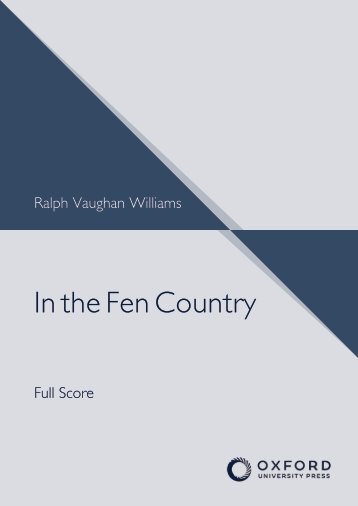
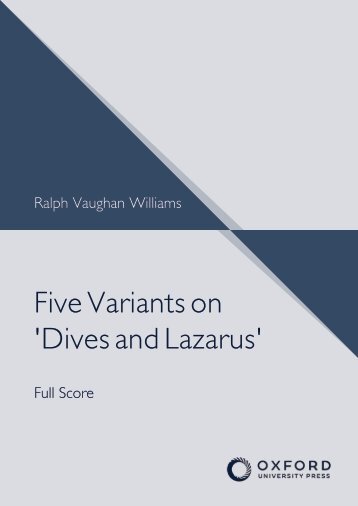
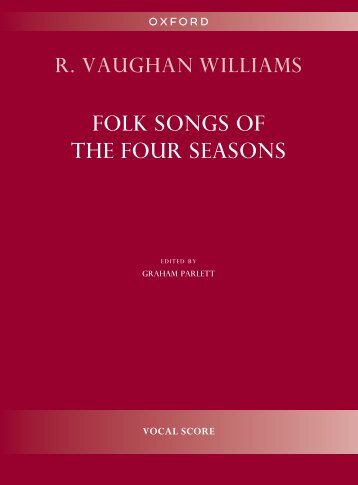




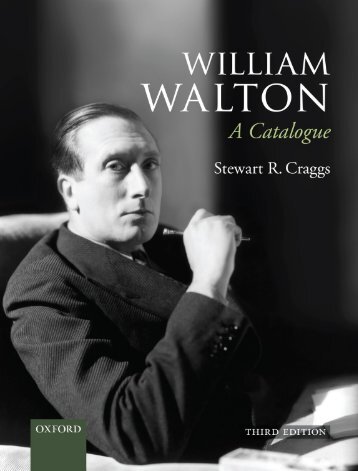



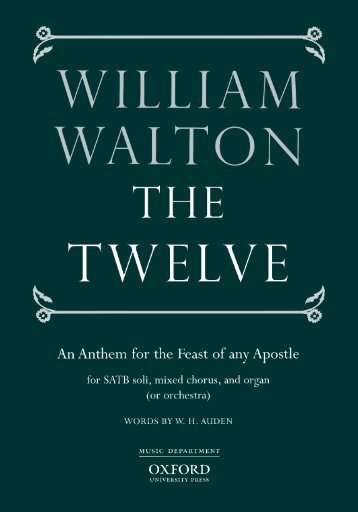


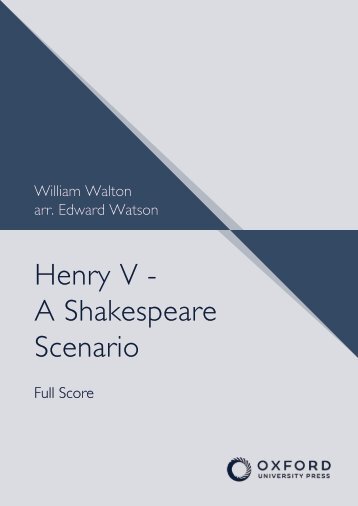






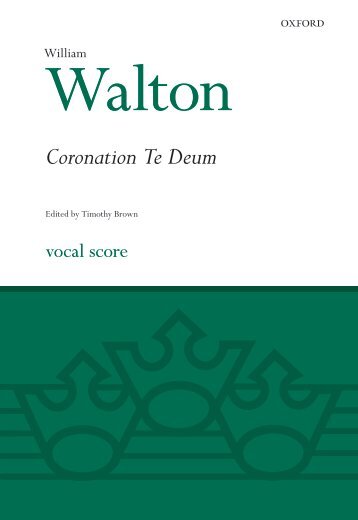
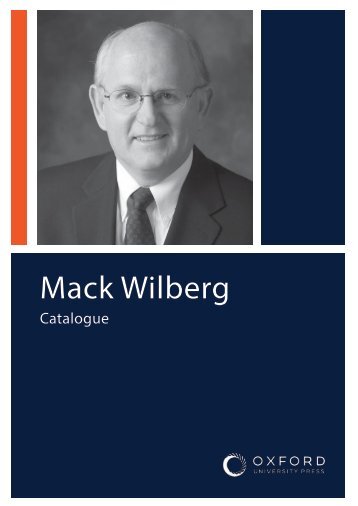
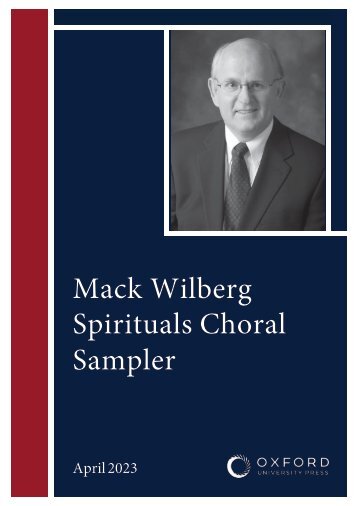
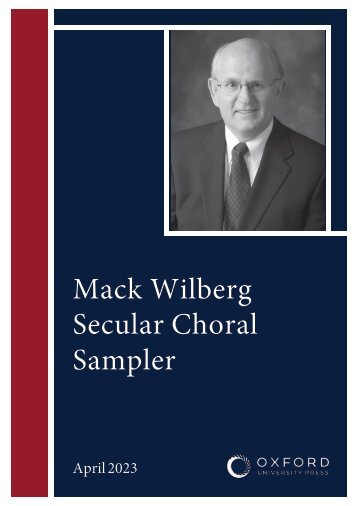




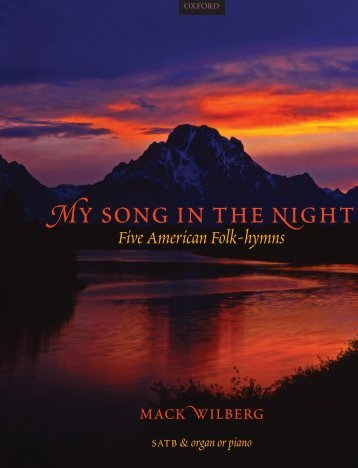
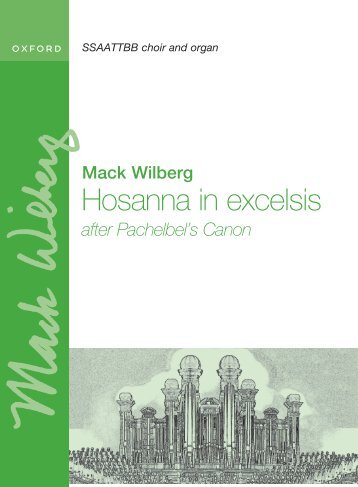
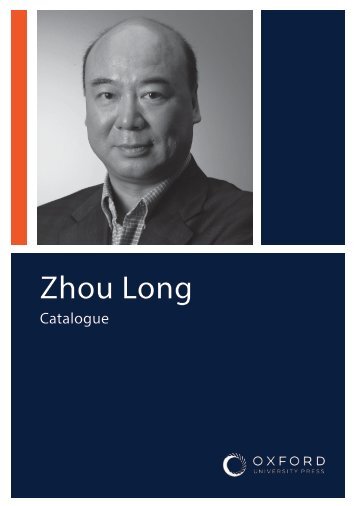

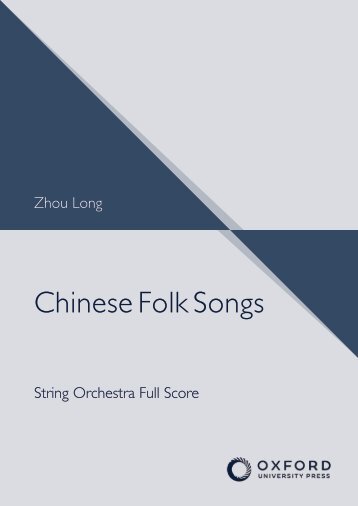

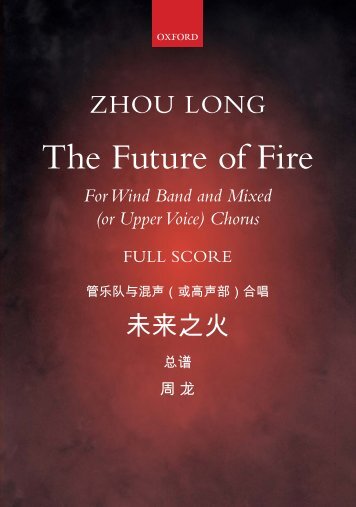





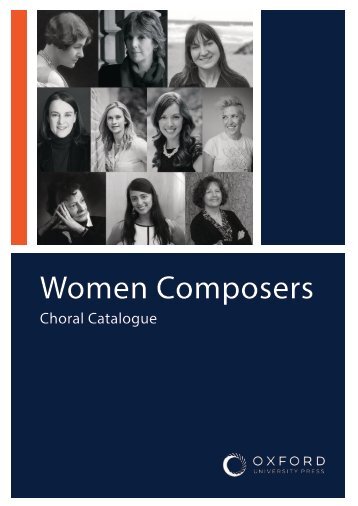

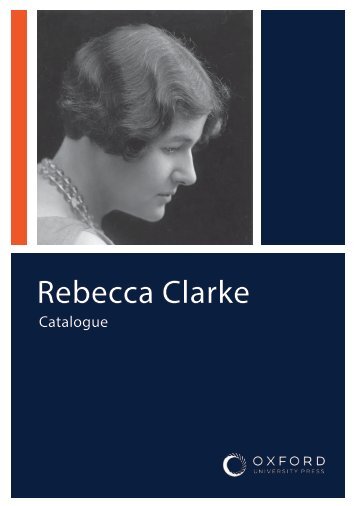

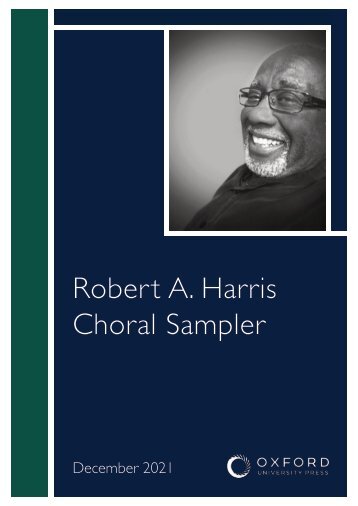

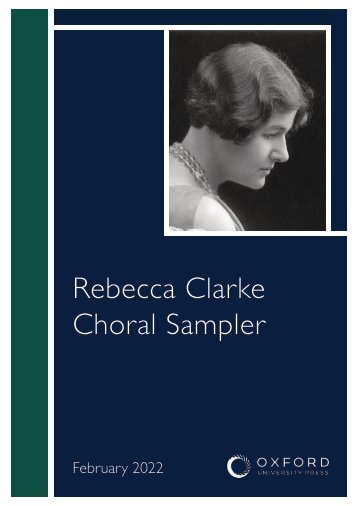
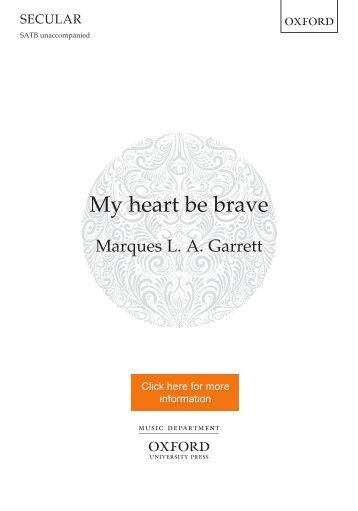
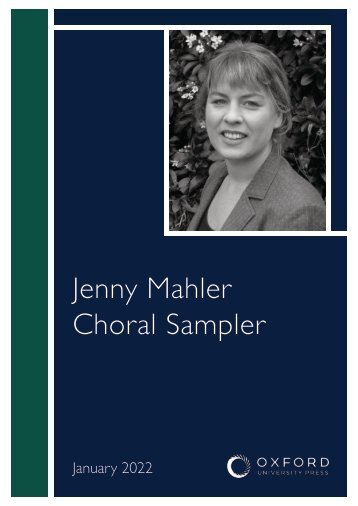
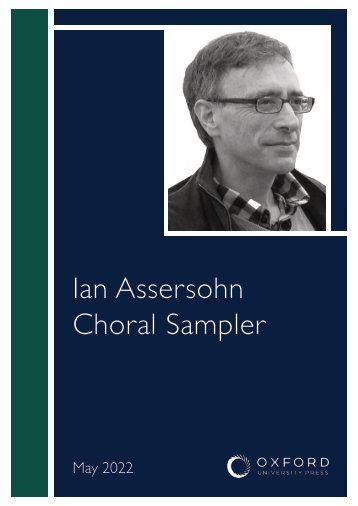
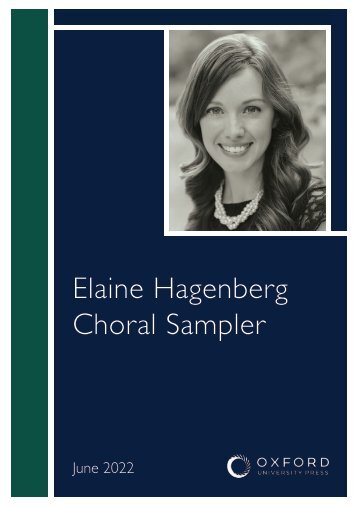
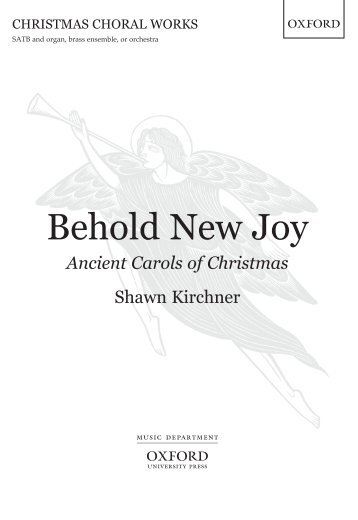
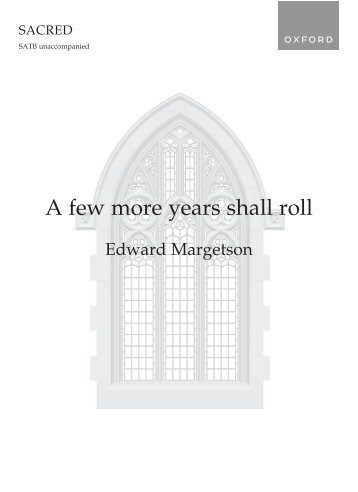
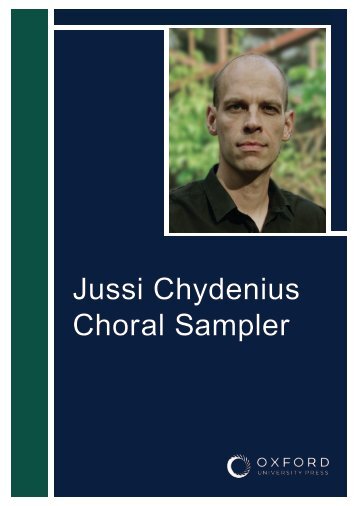


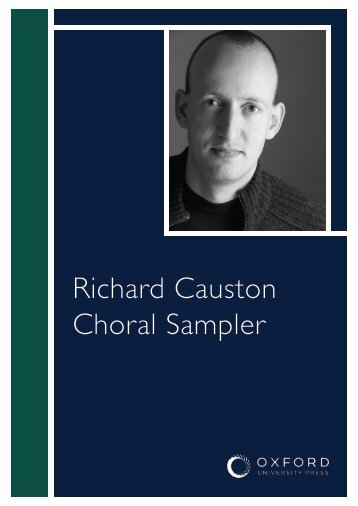
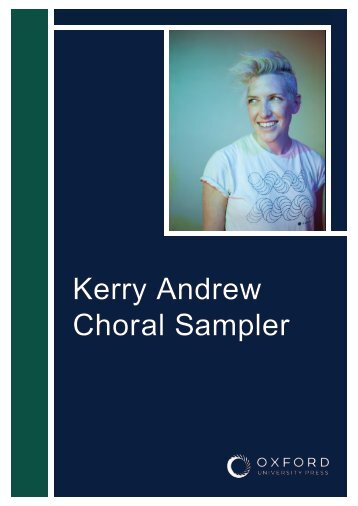

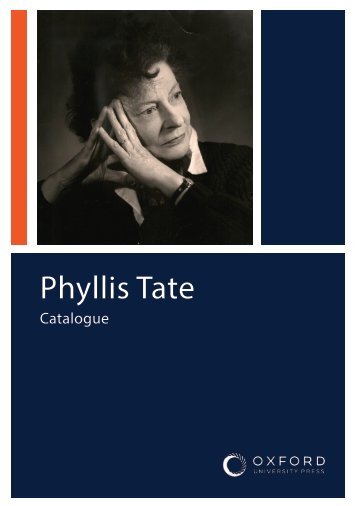
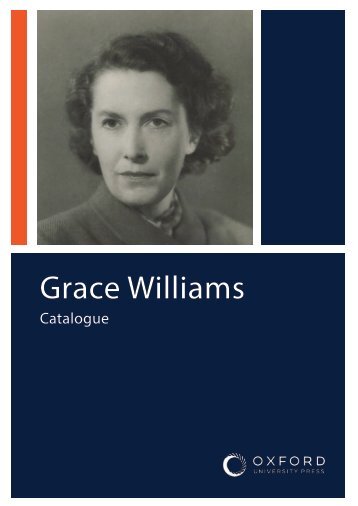

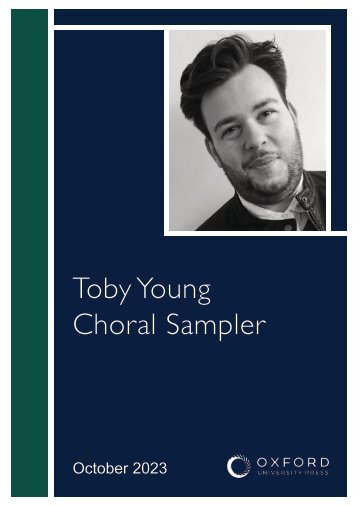
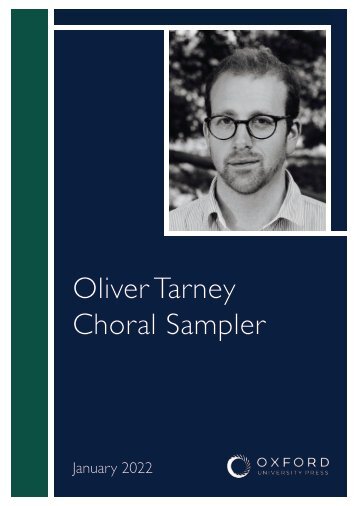

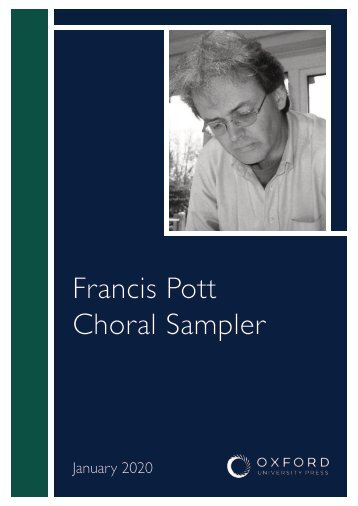
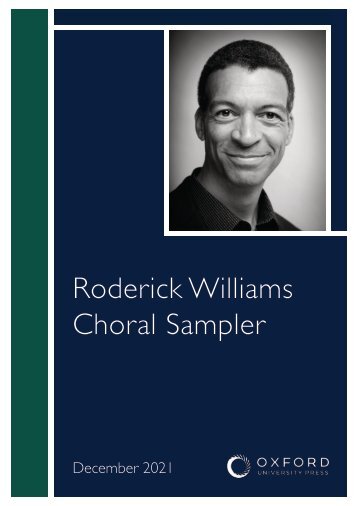
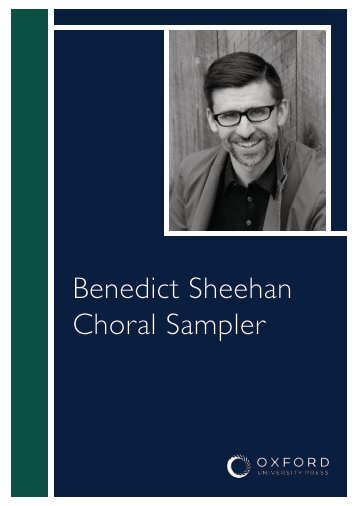
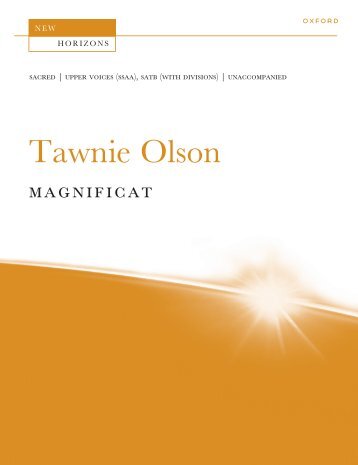
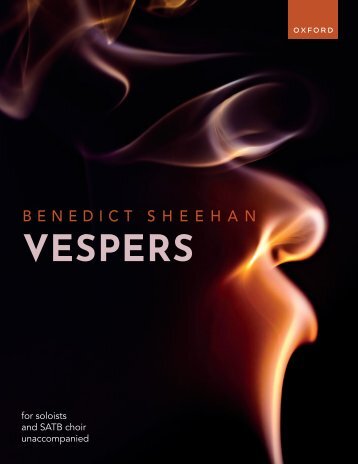

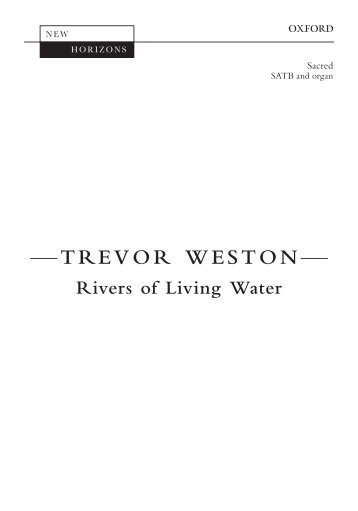
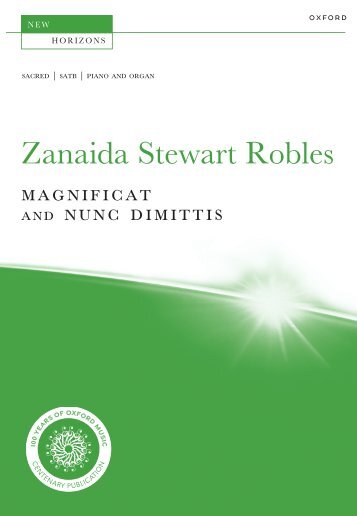


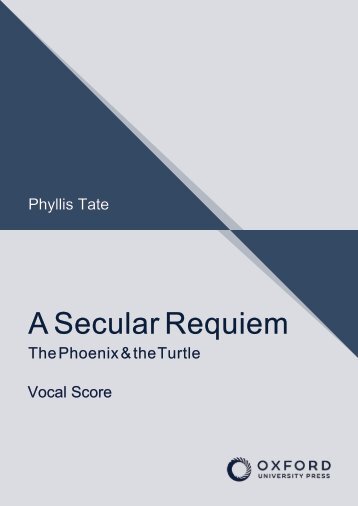



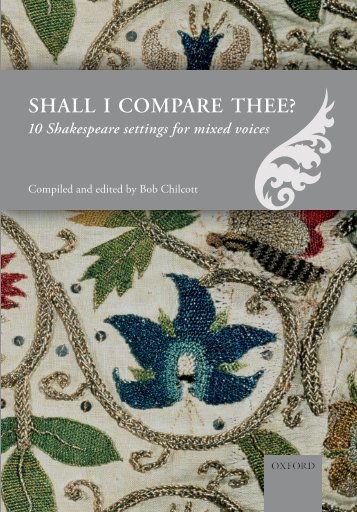
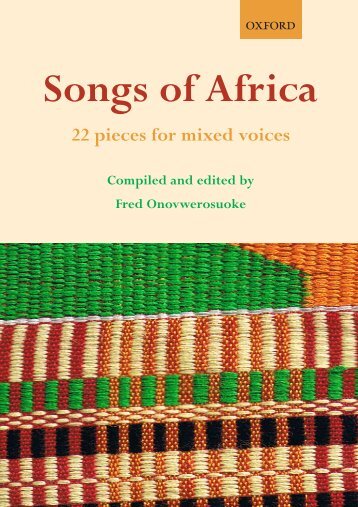

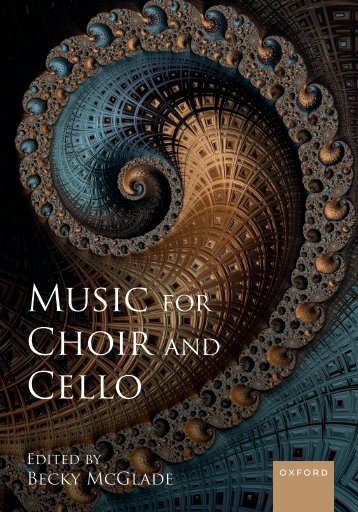


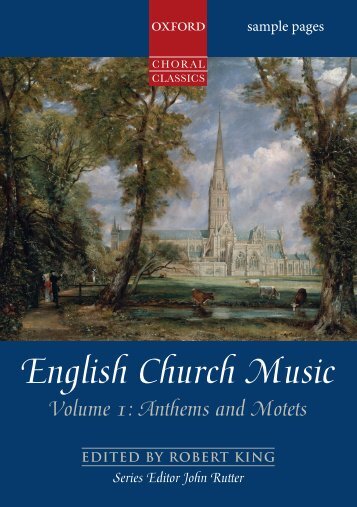
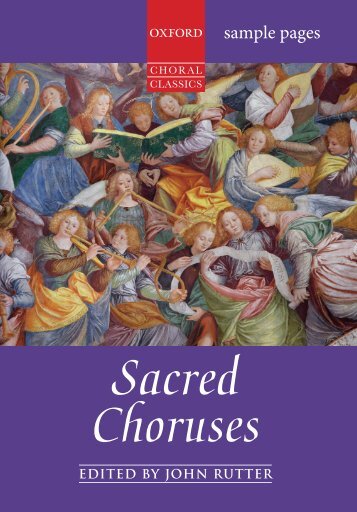

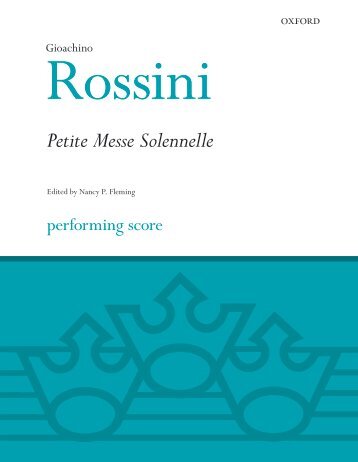
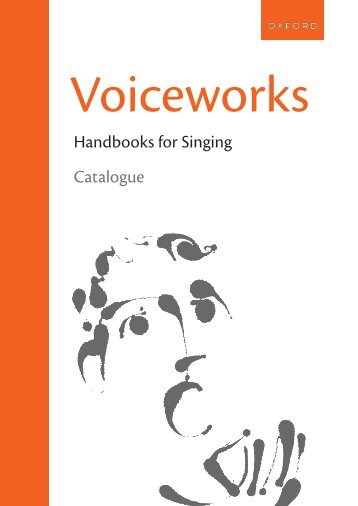



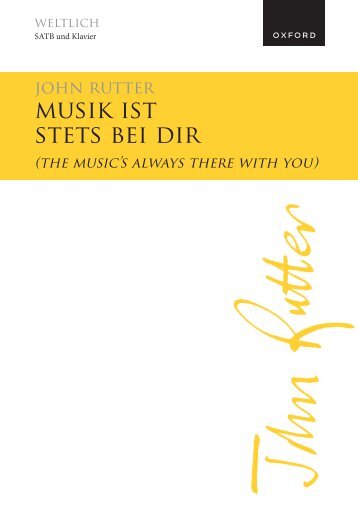
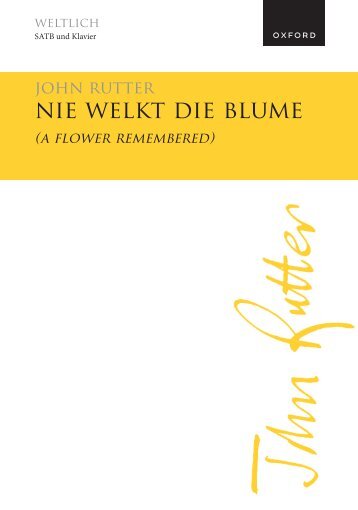

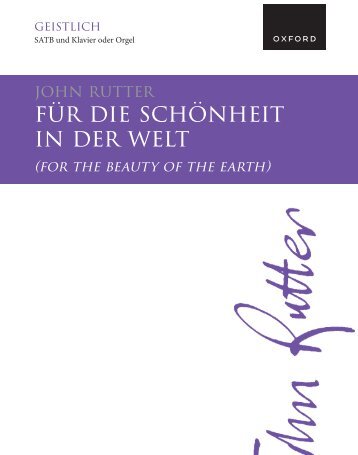
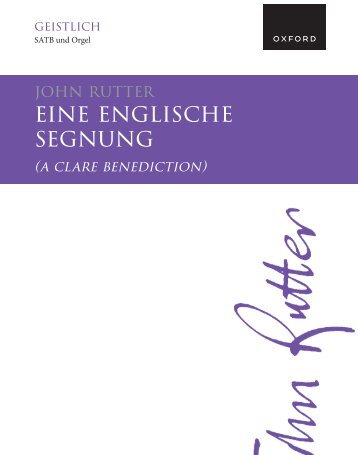

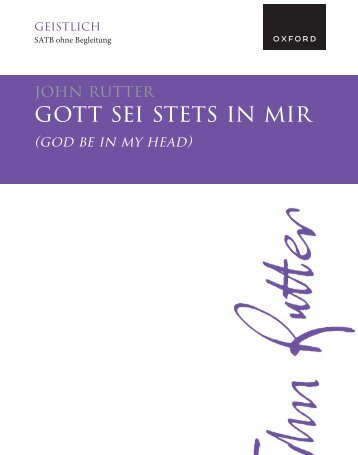


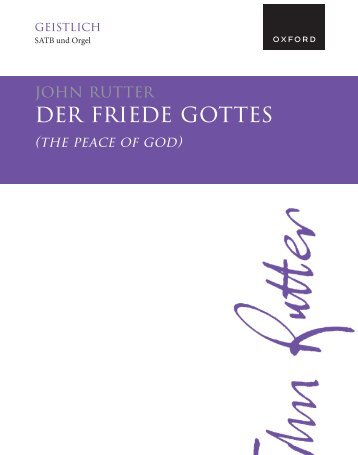

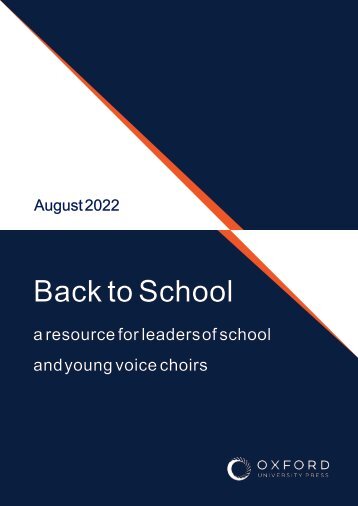
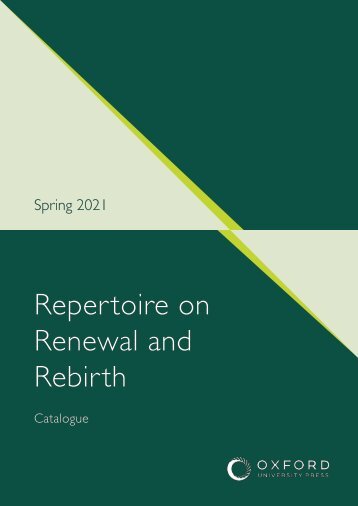
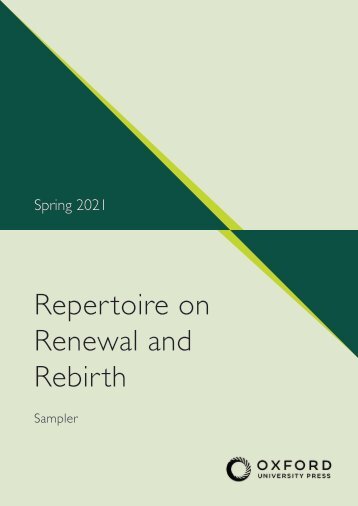
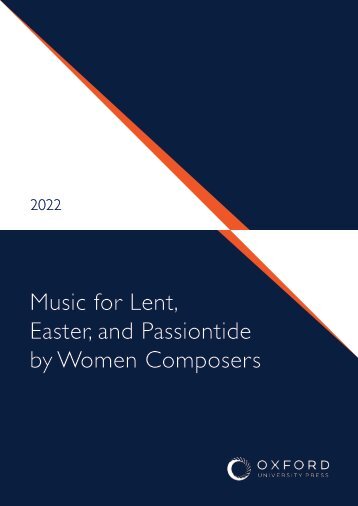
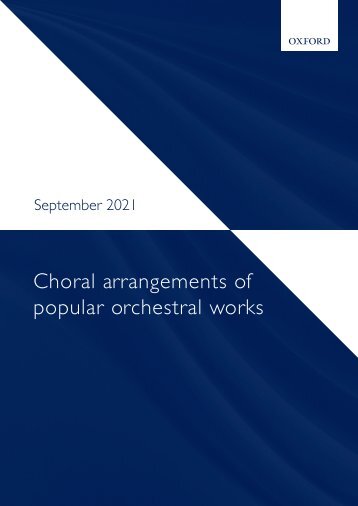
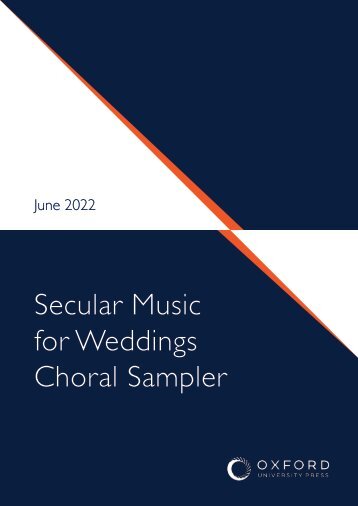

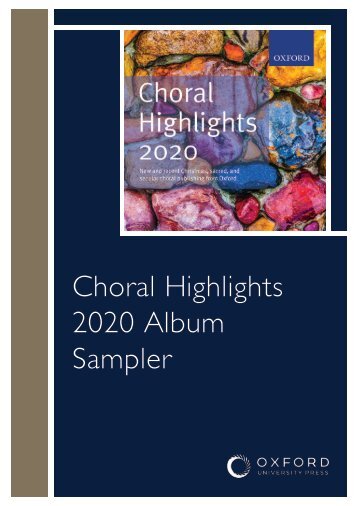
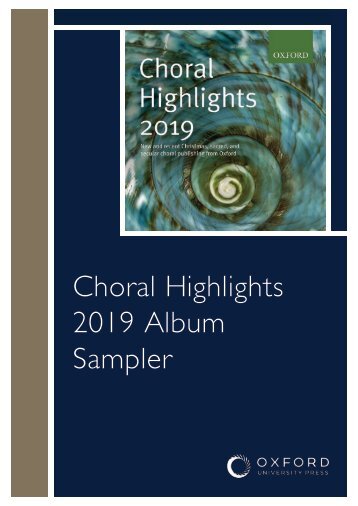
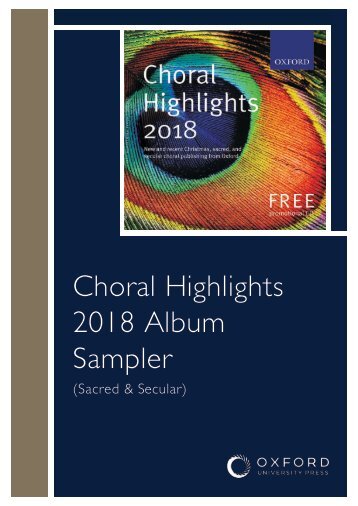


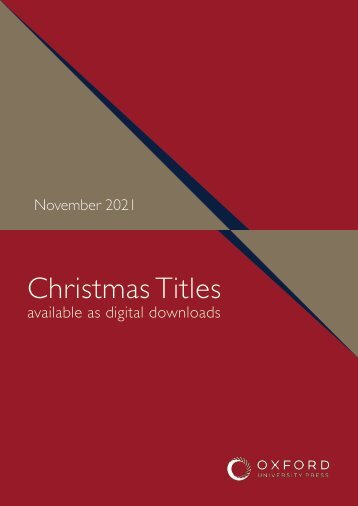
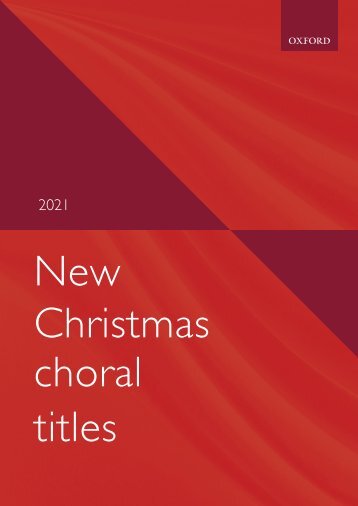
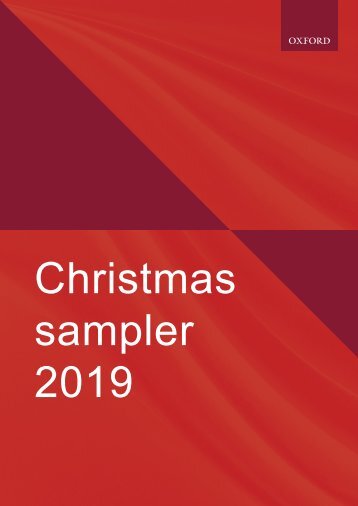
Facebook
Twitter
Email